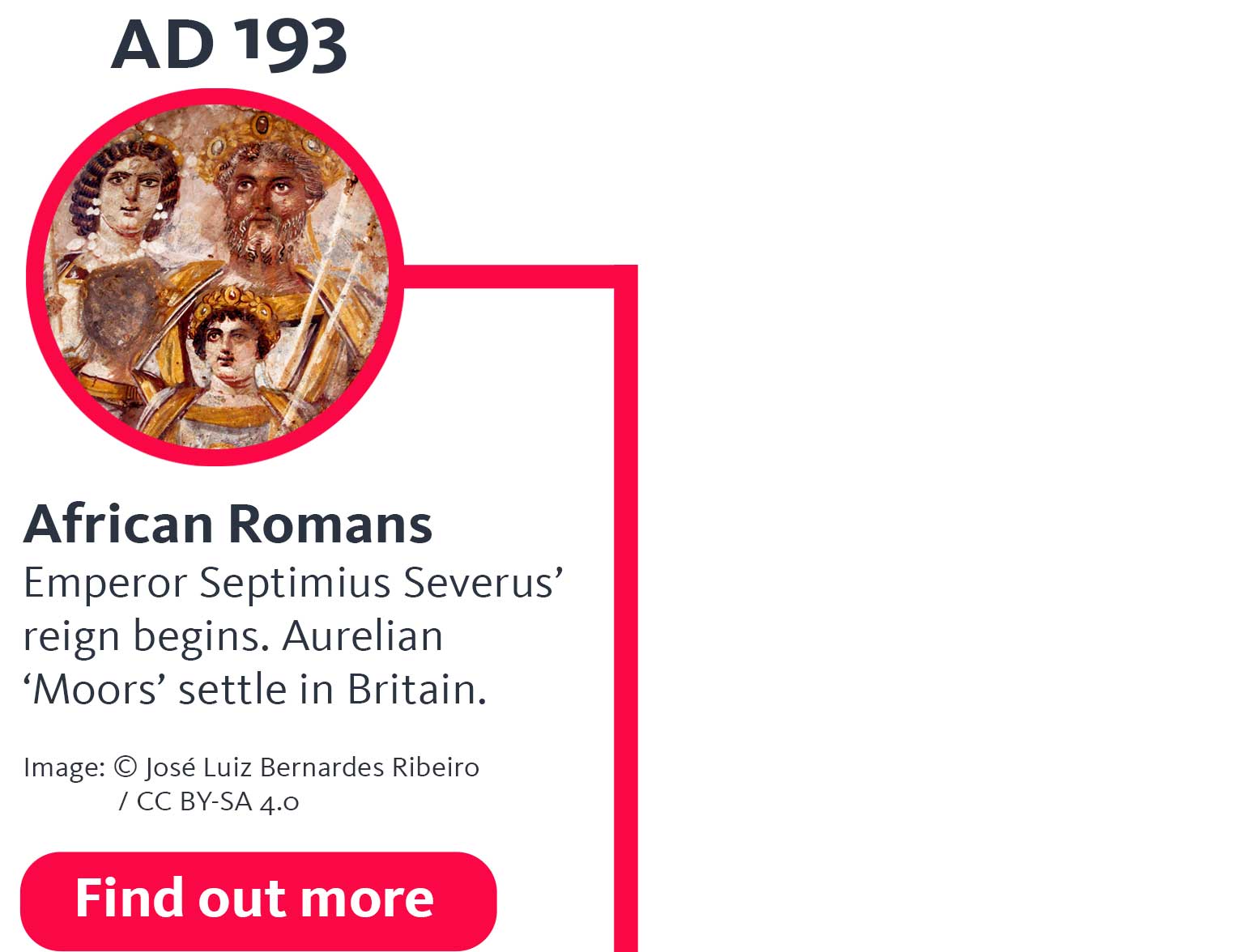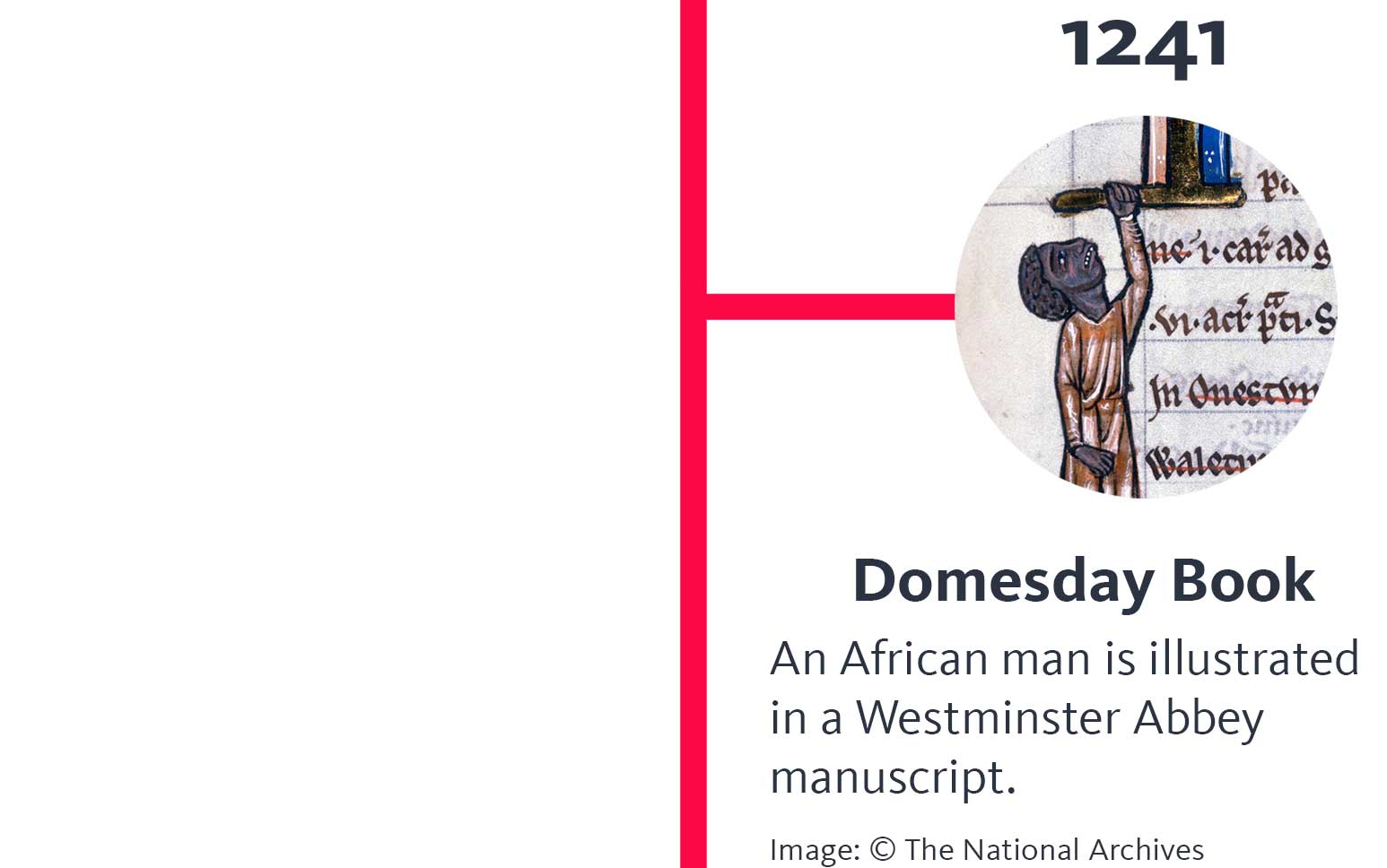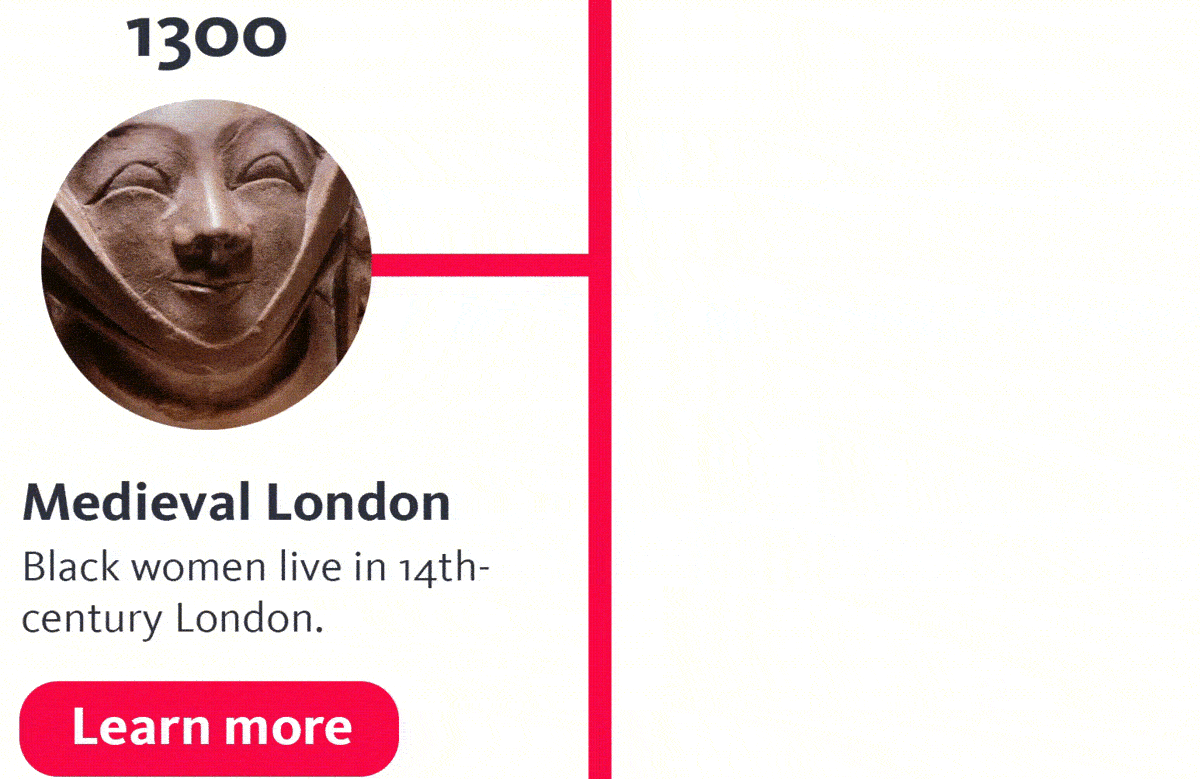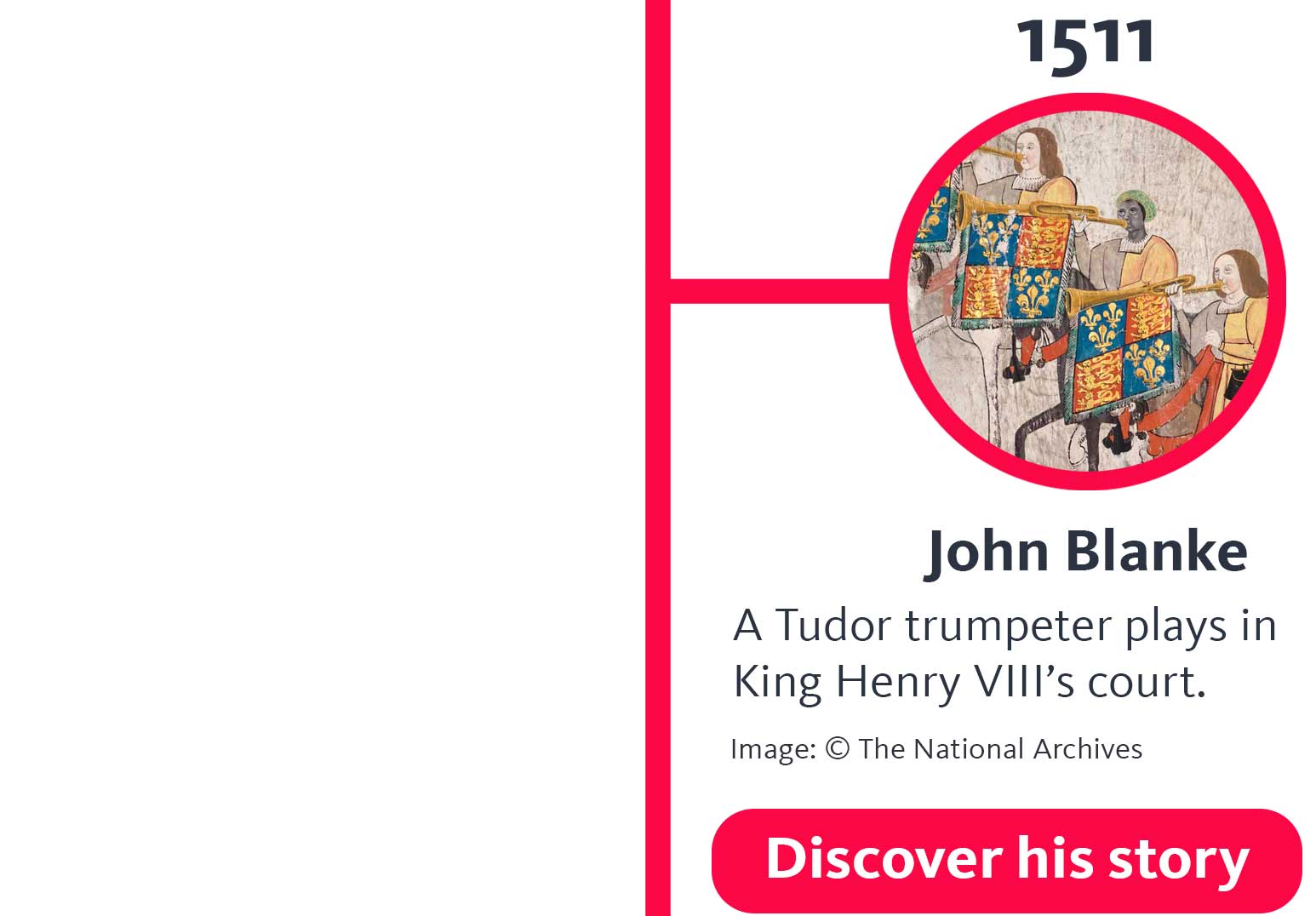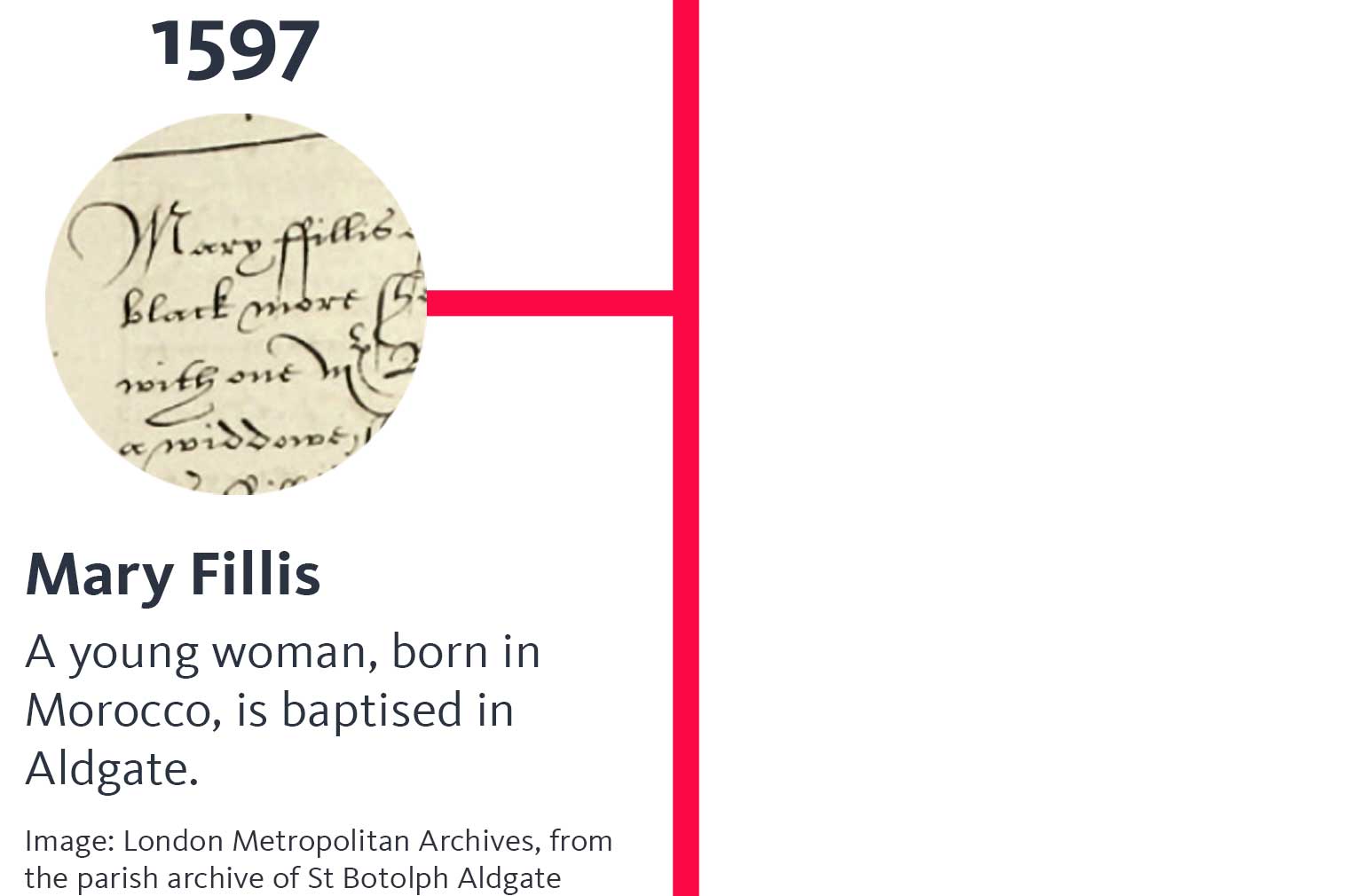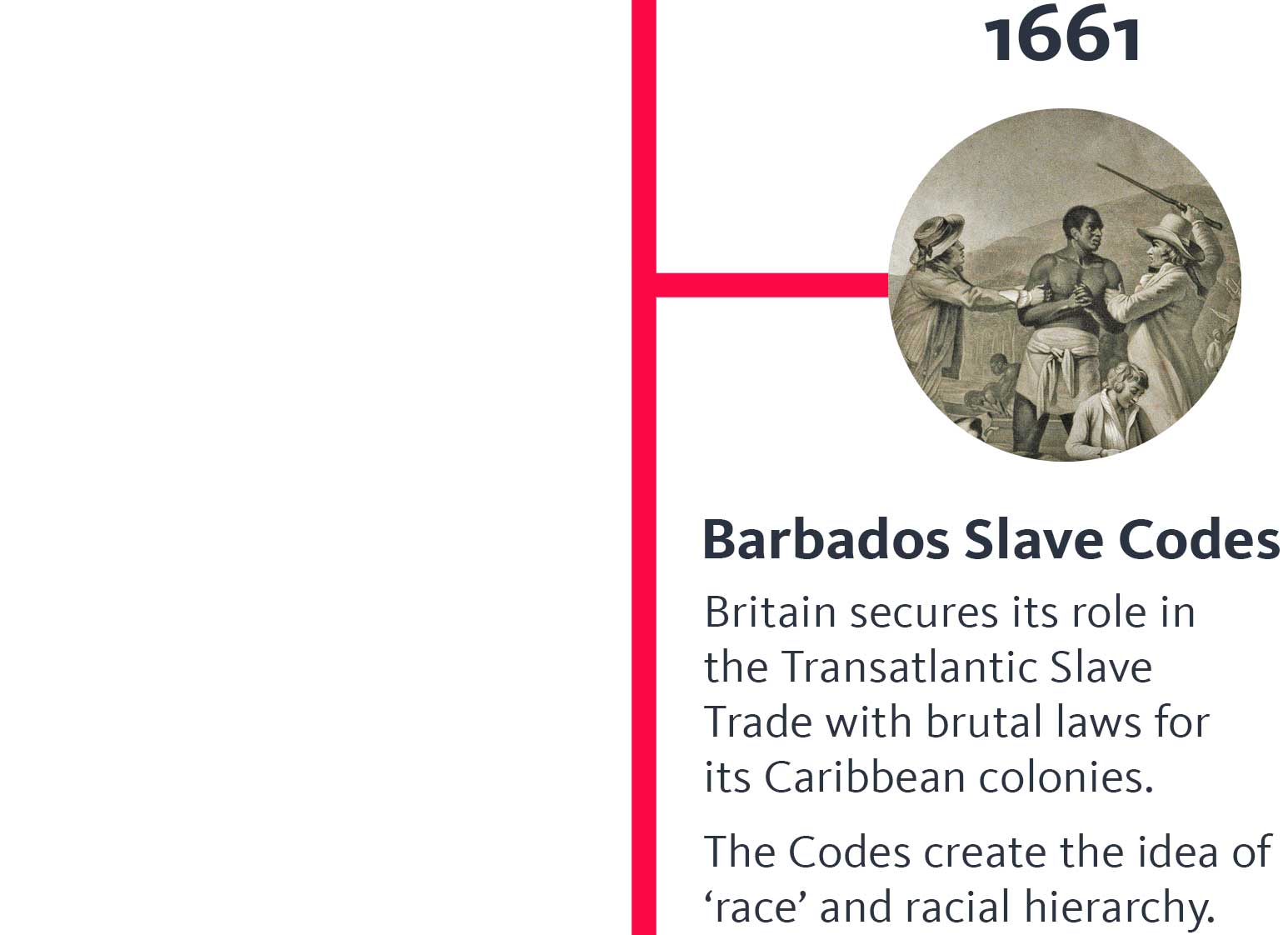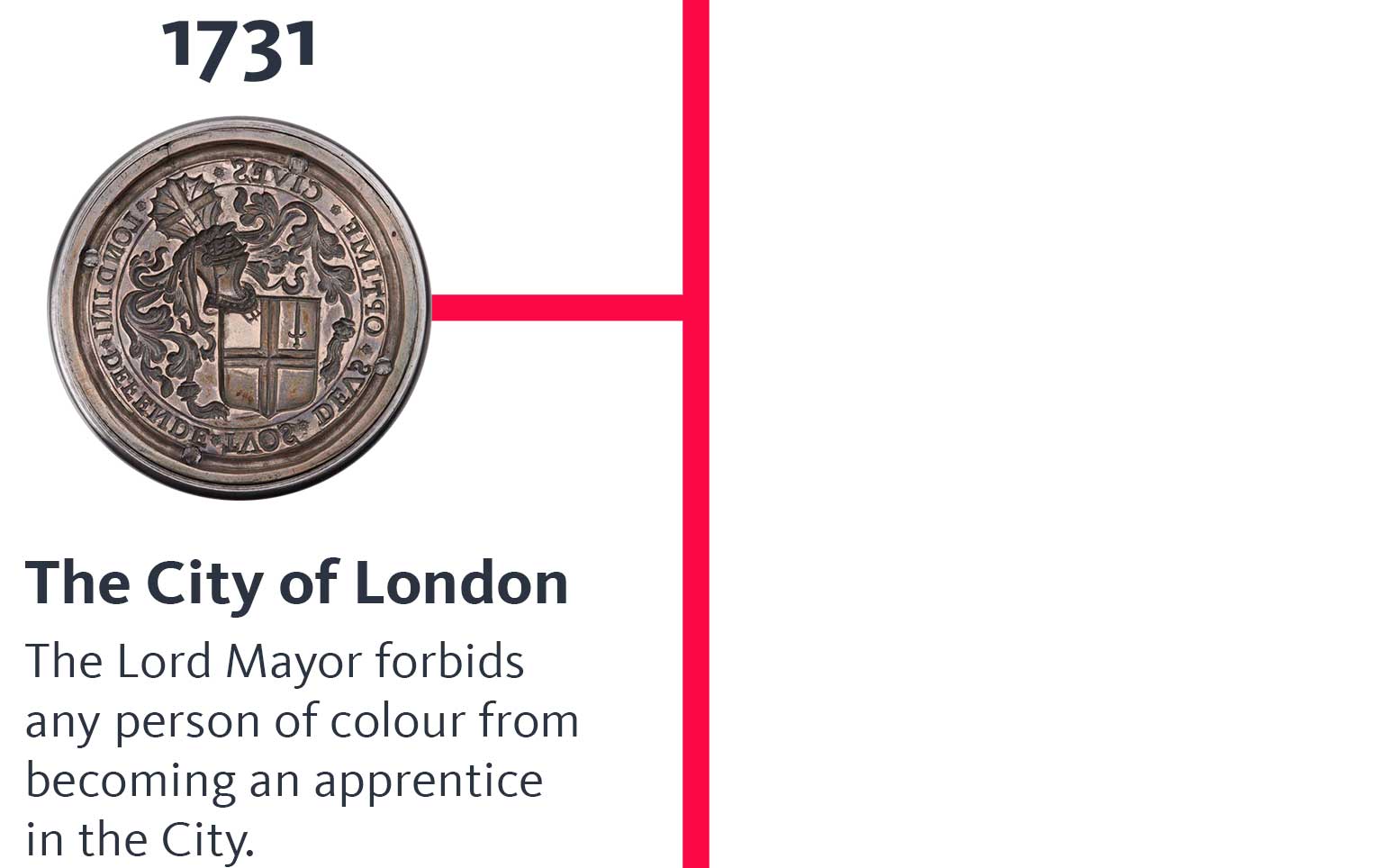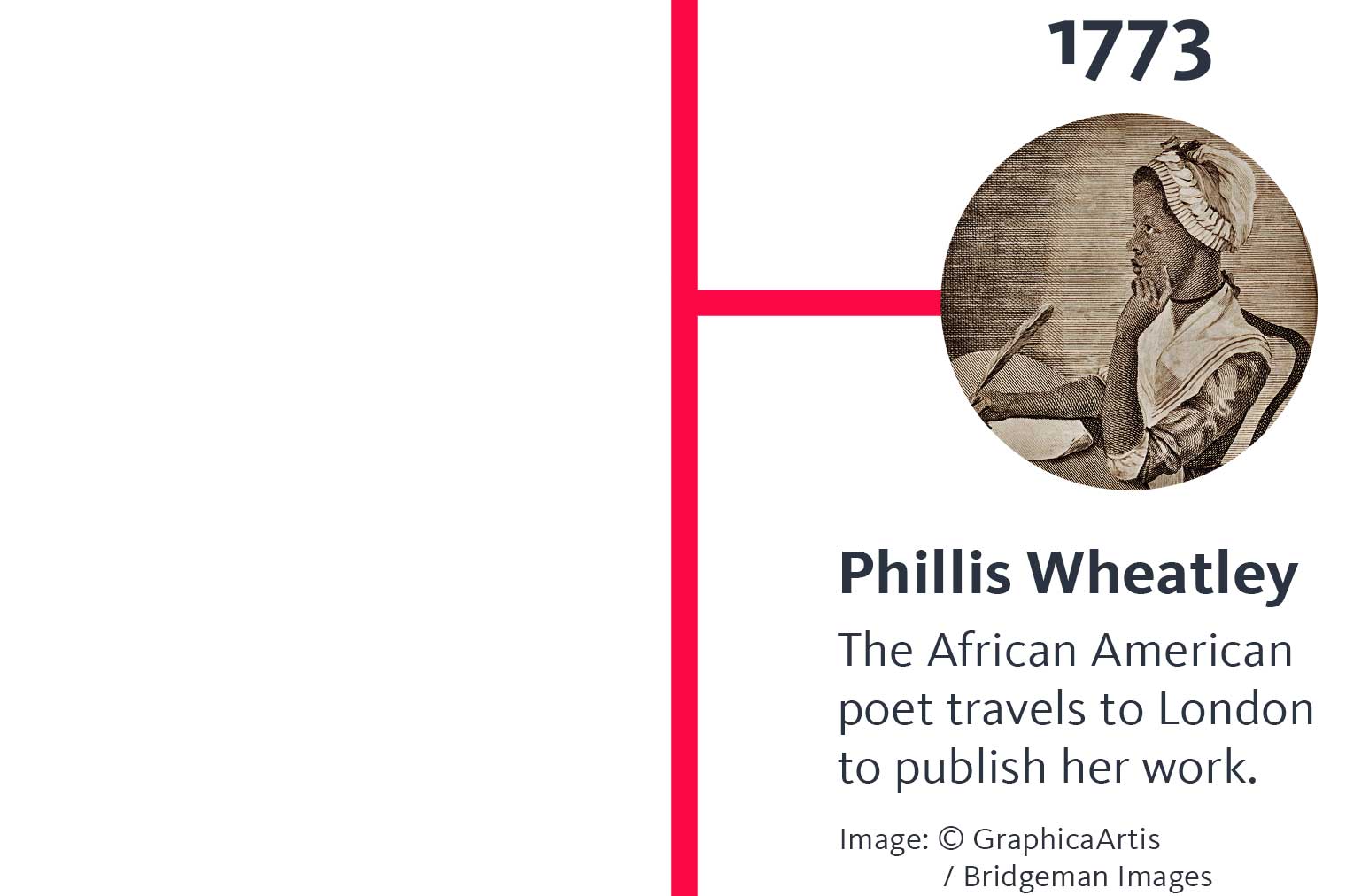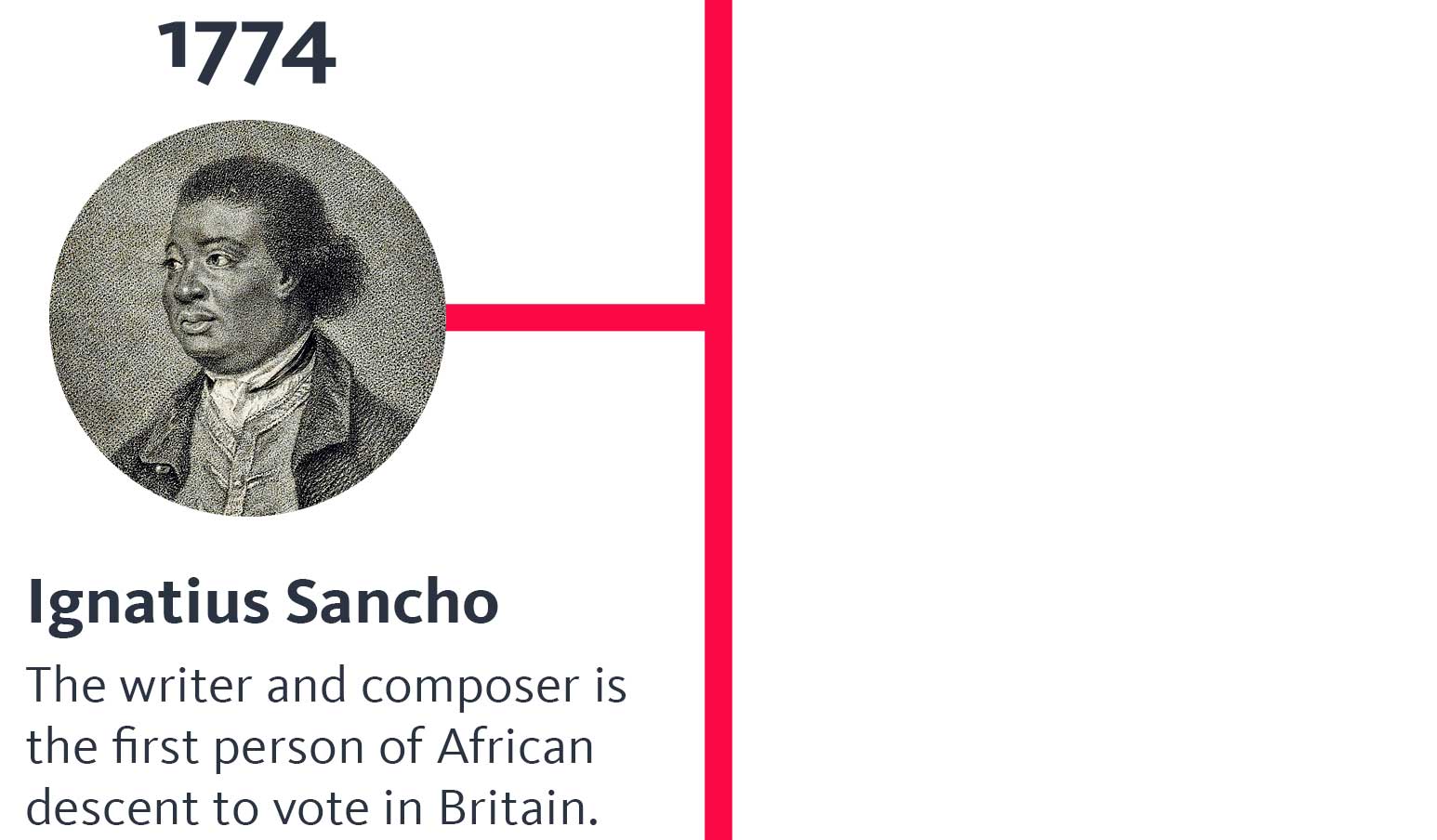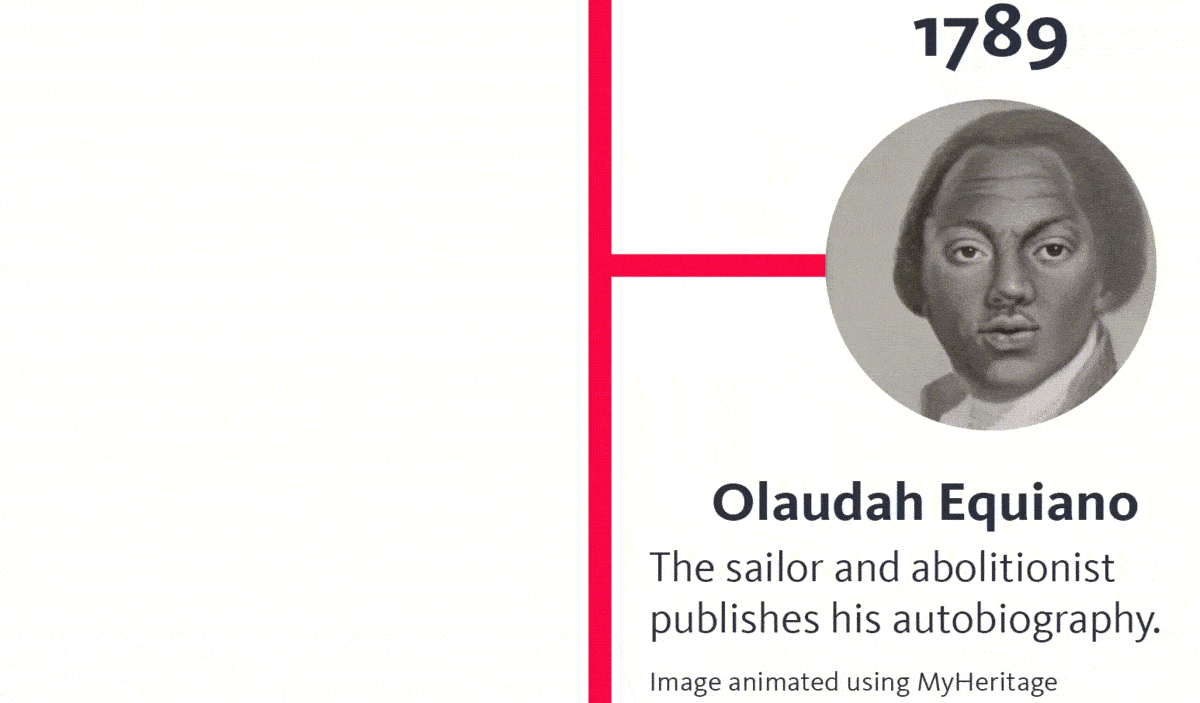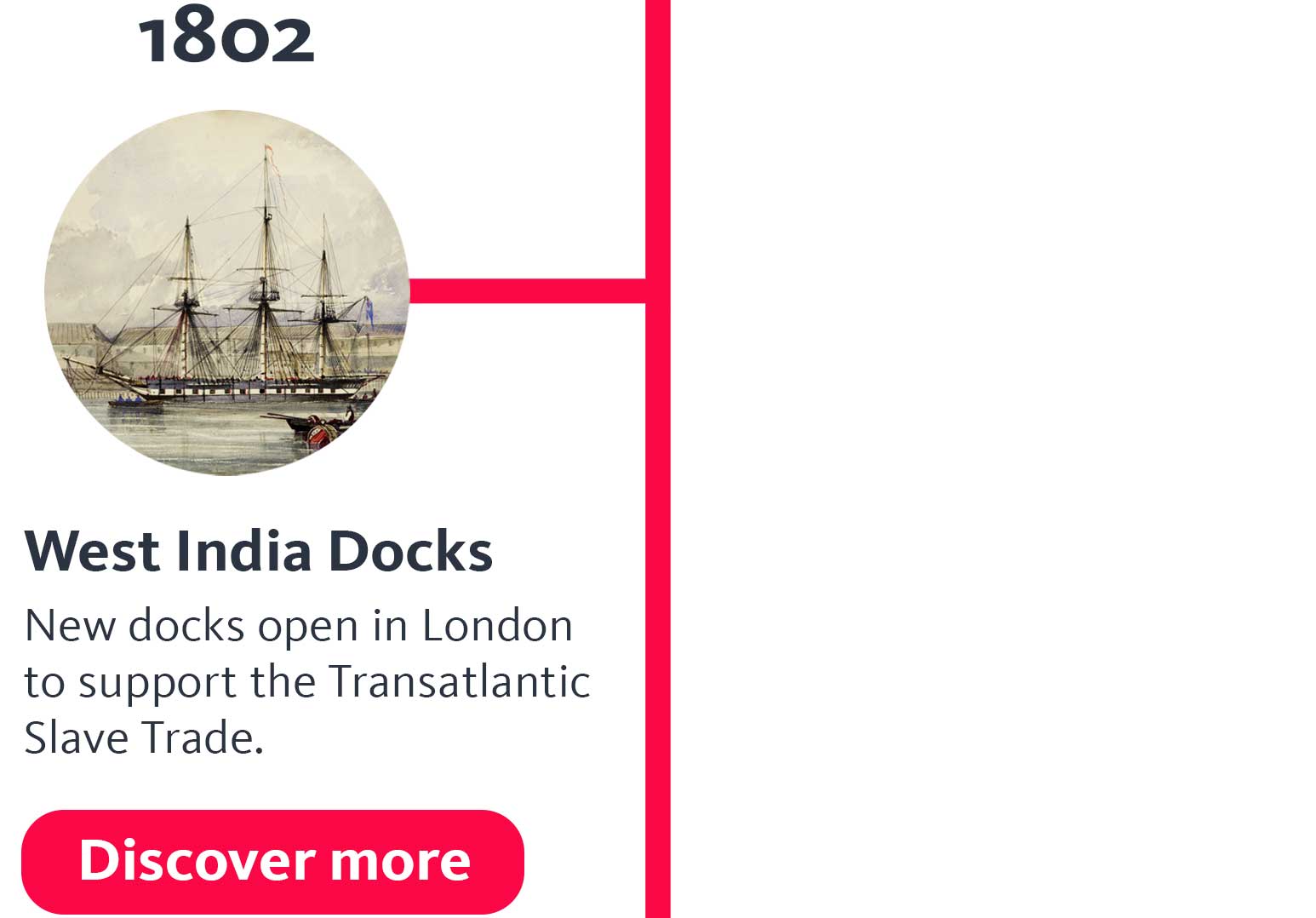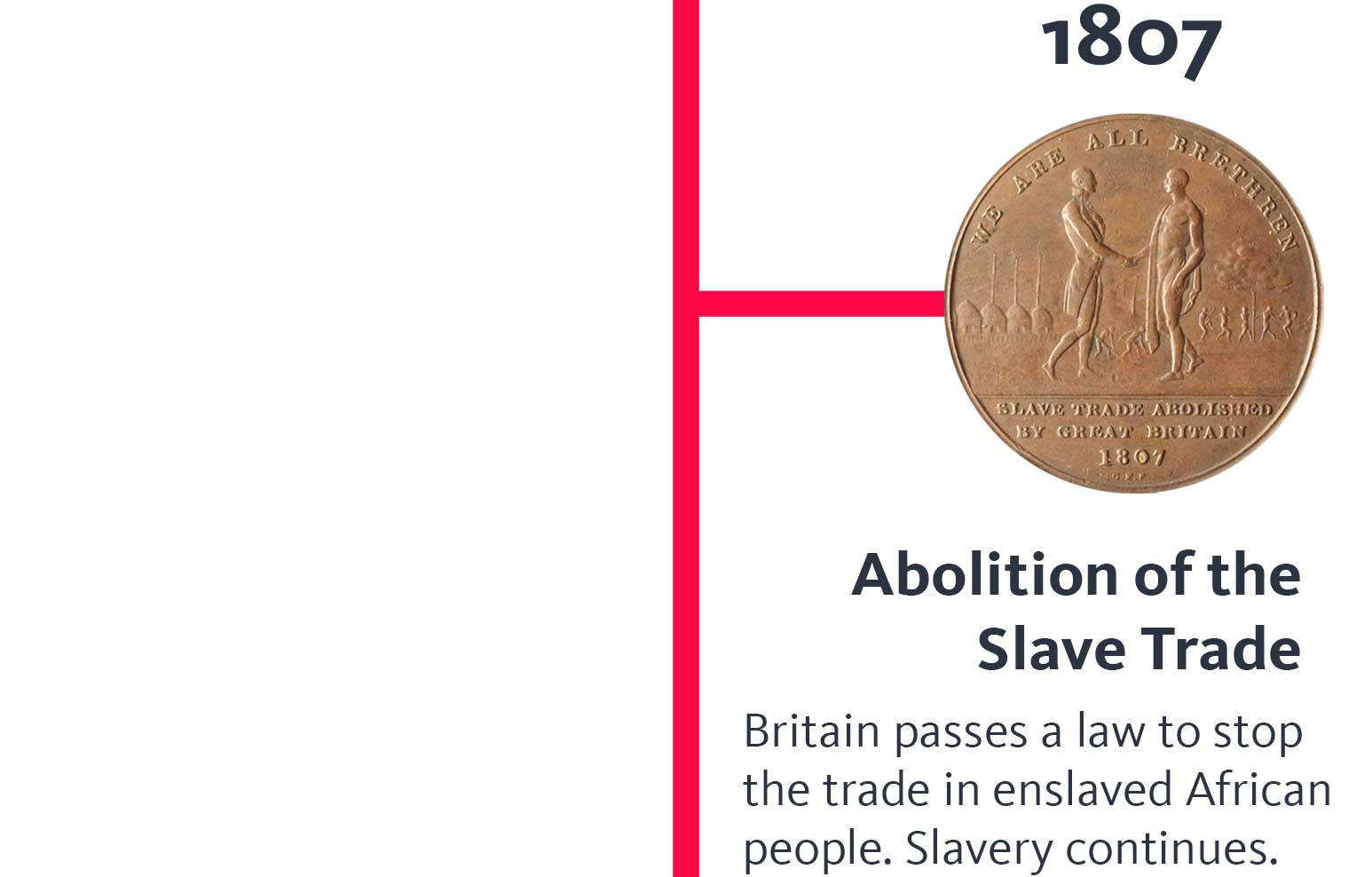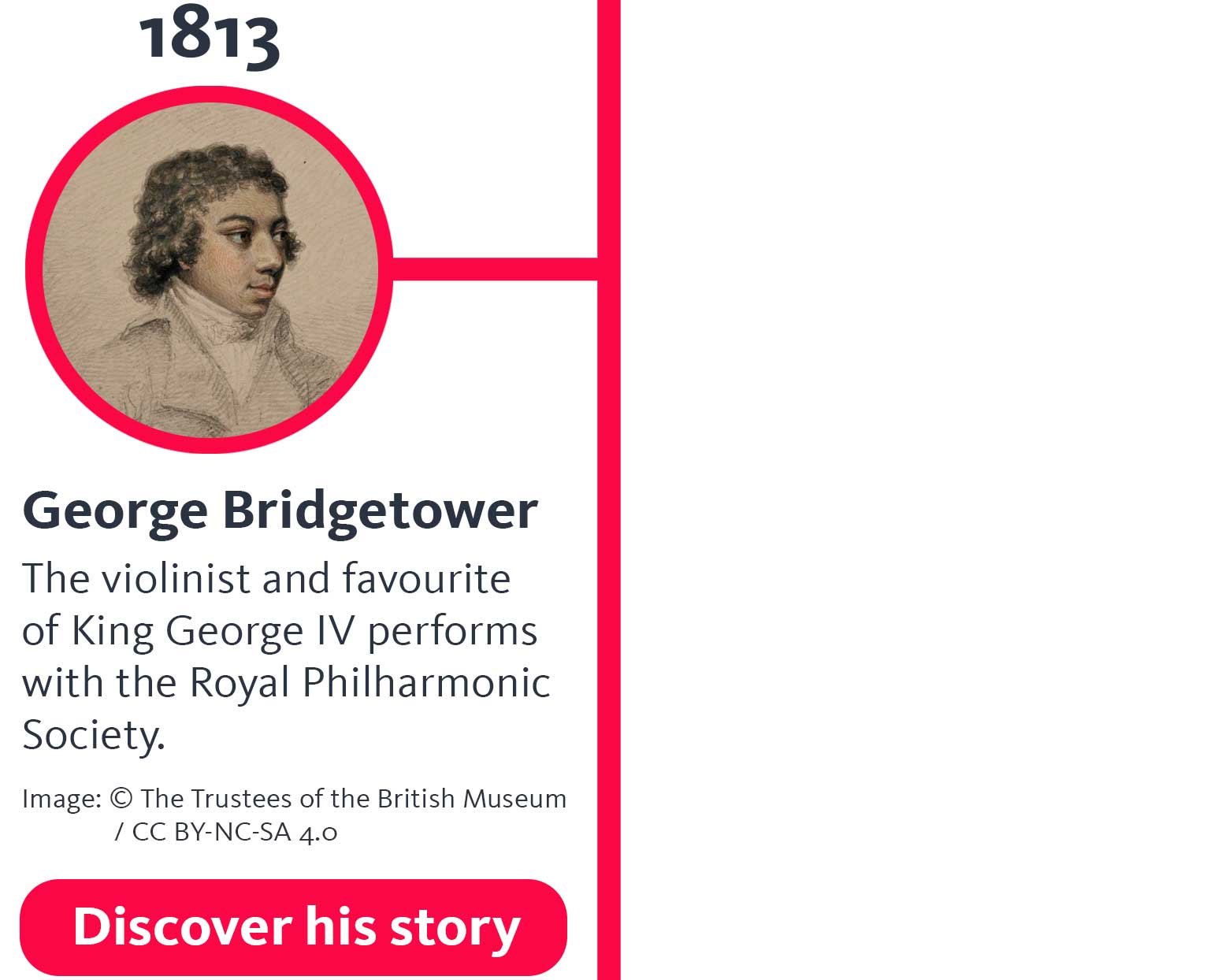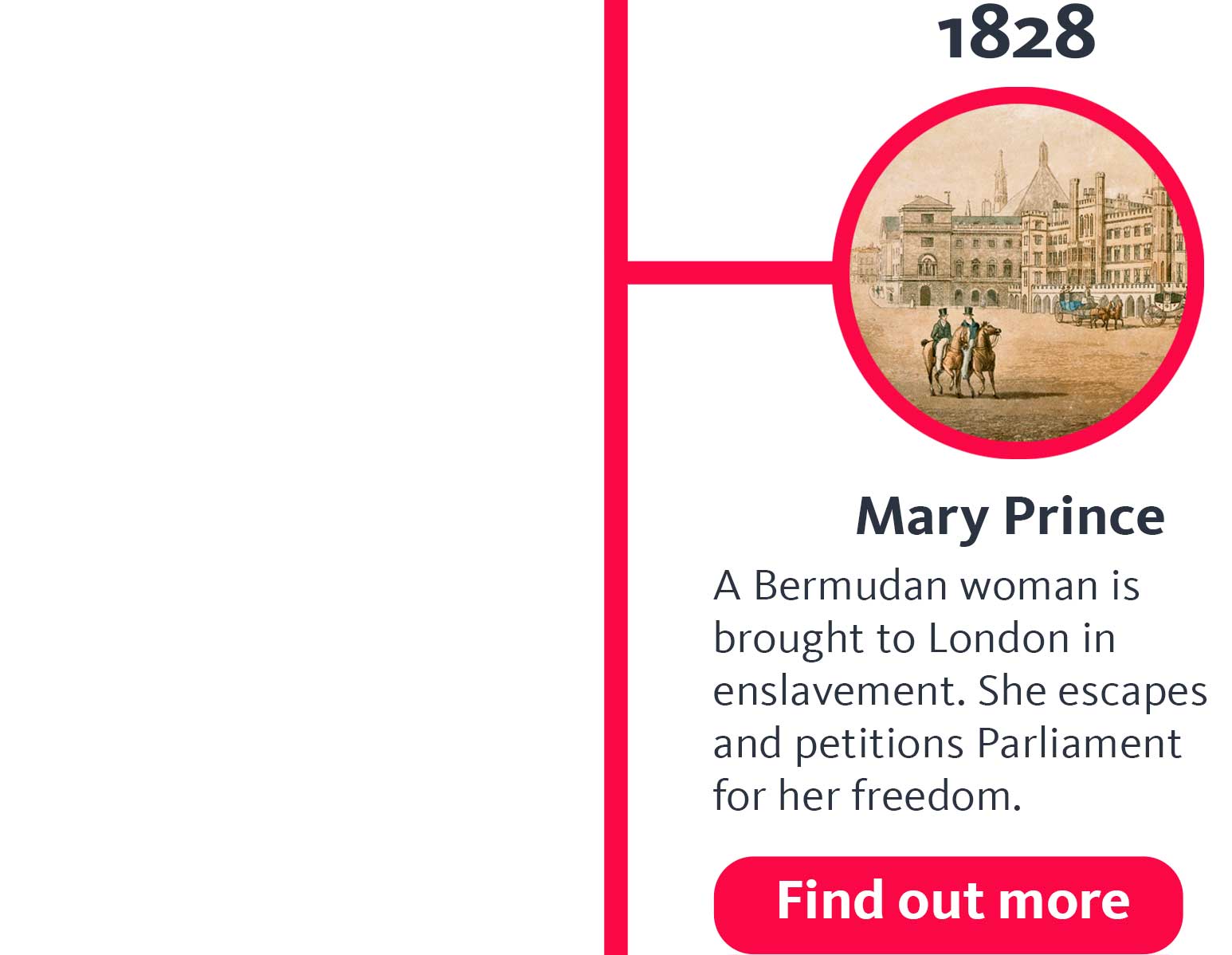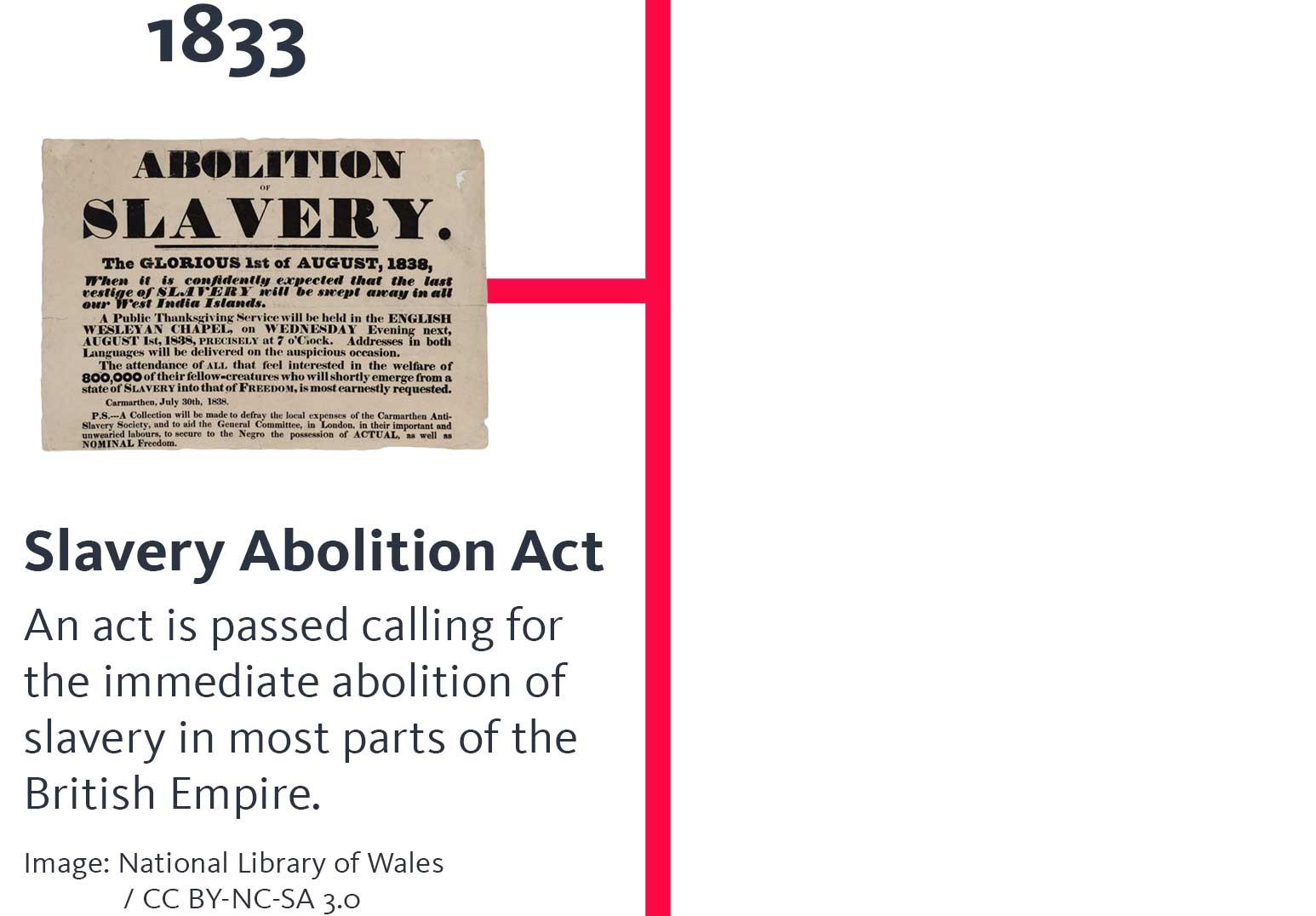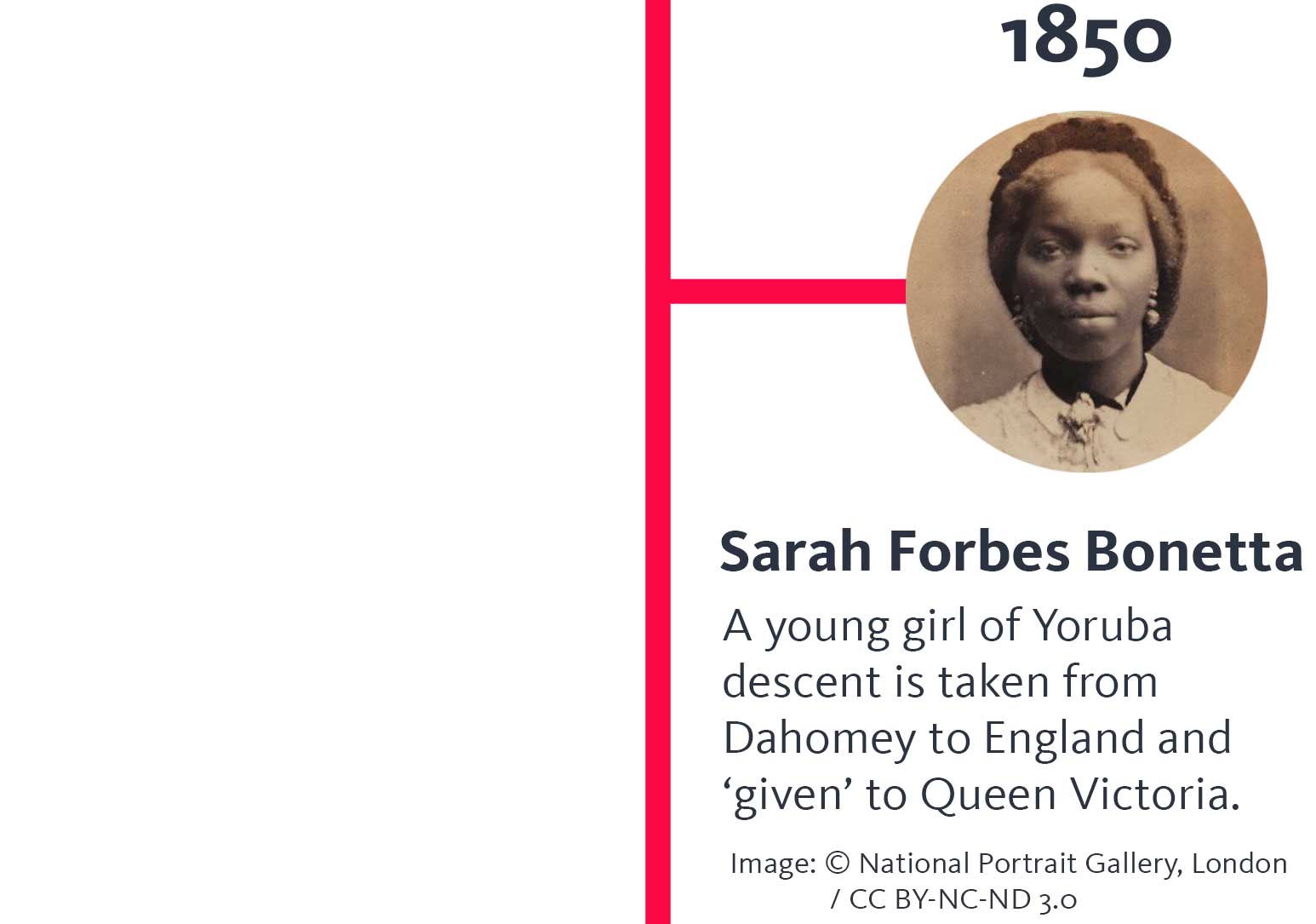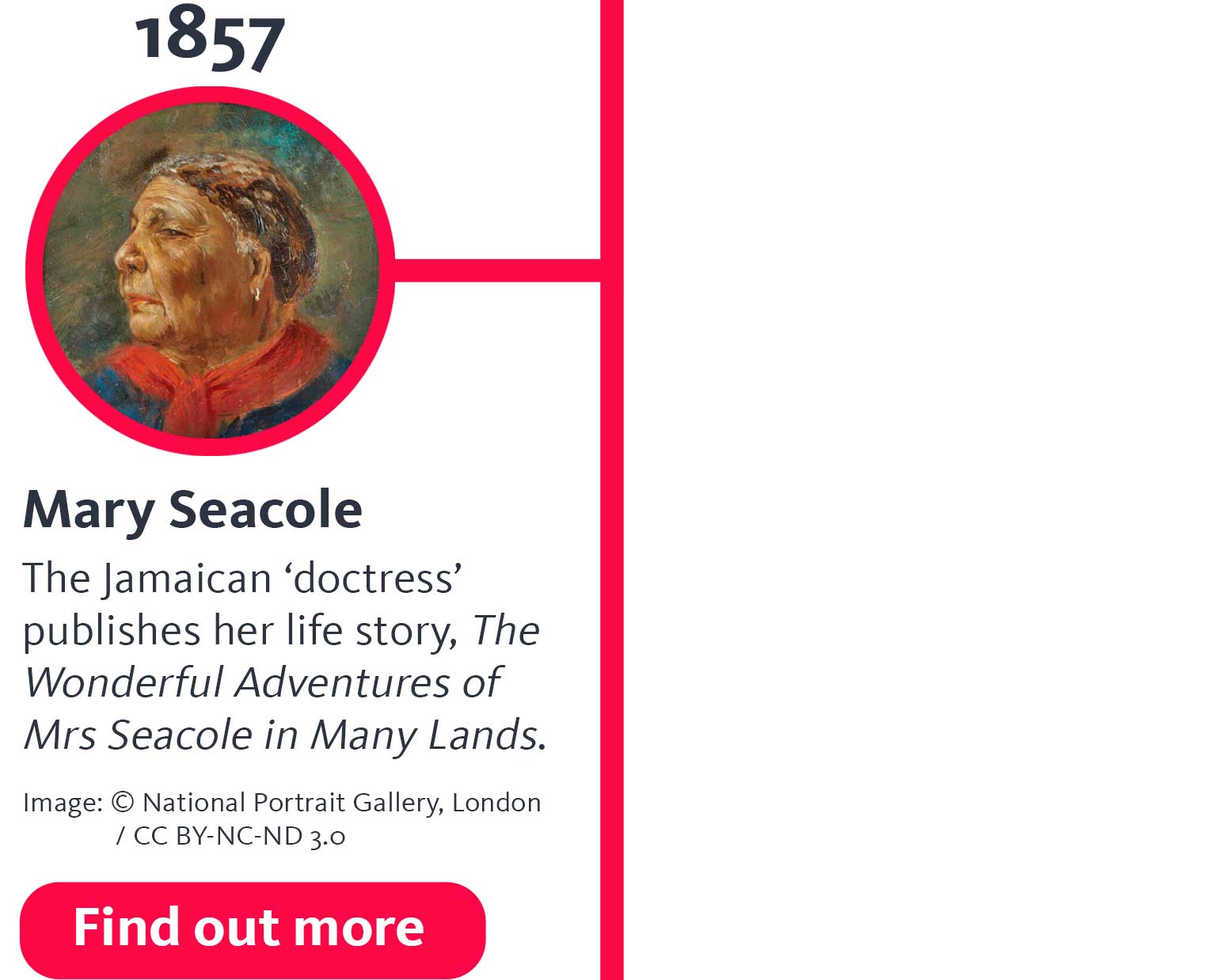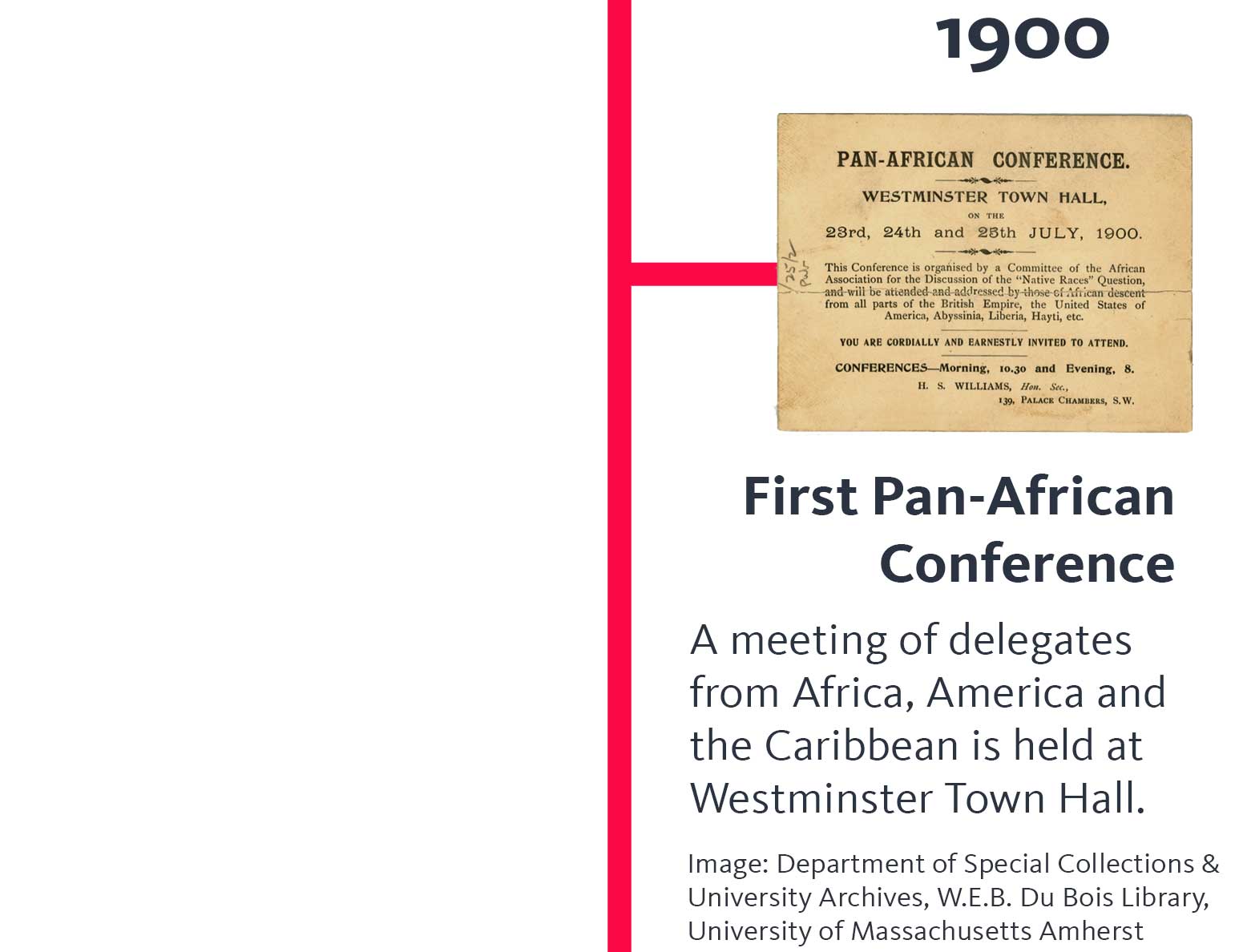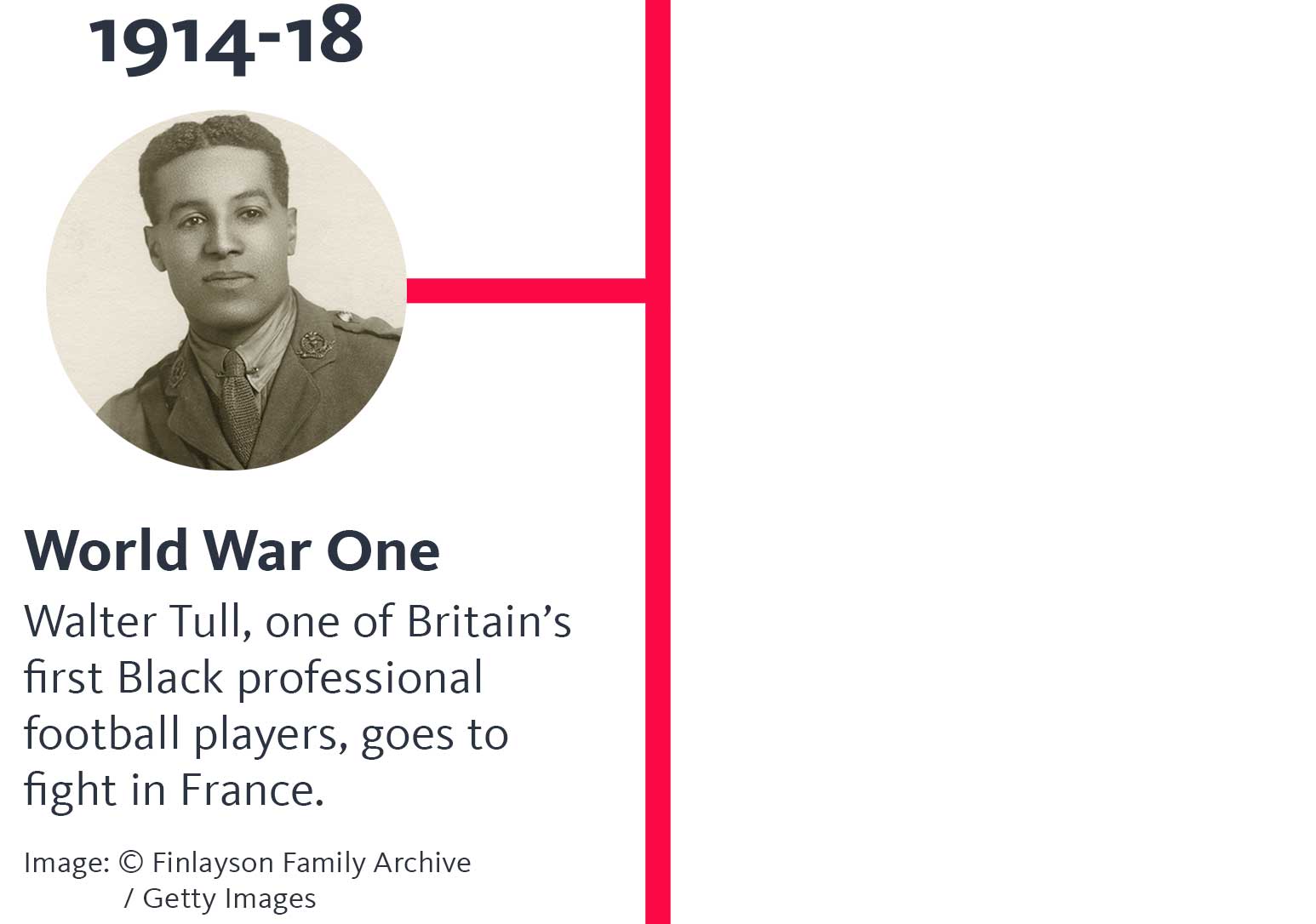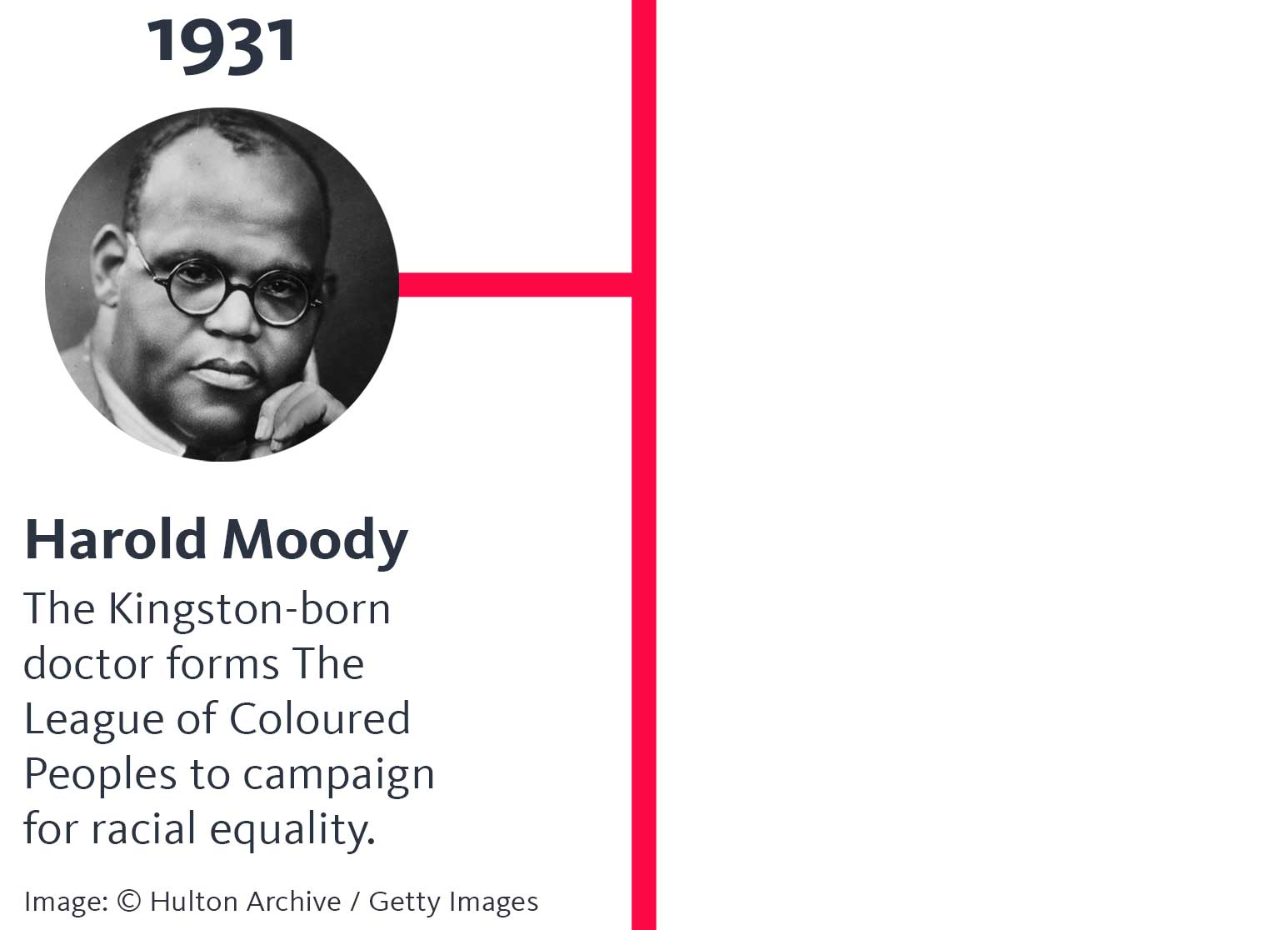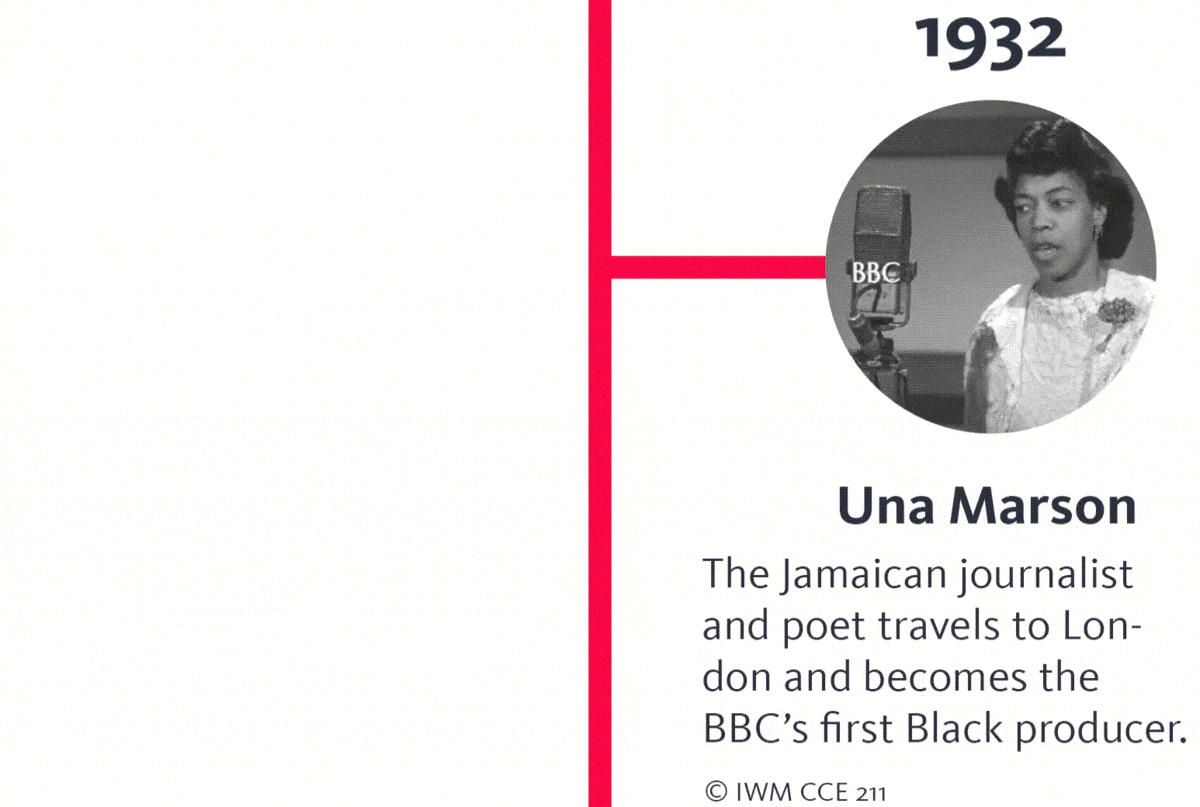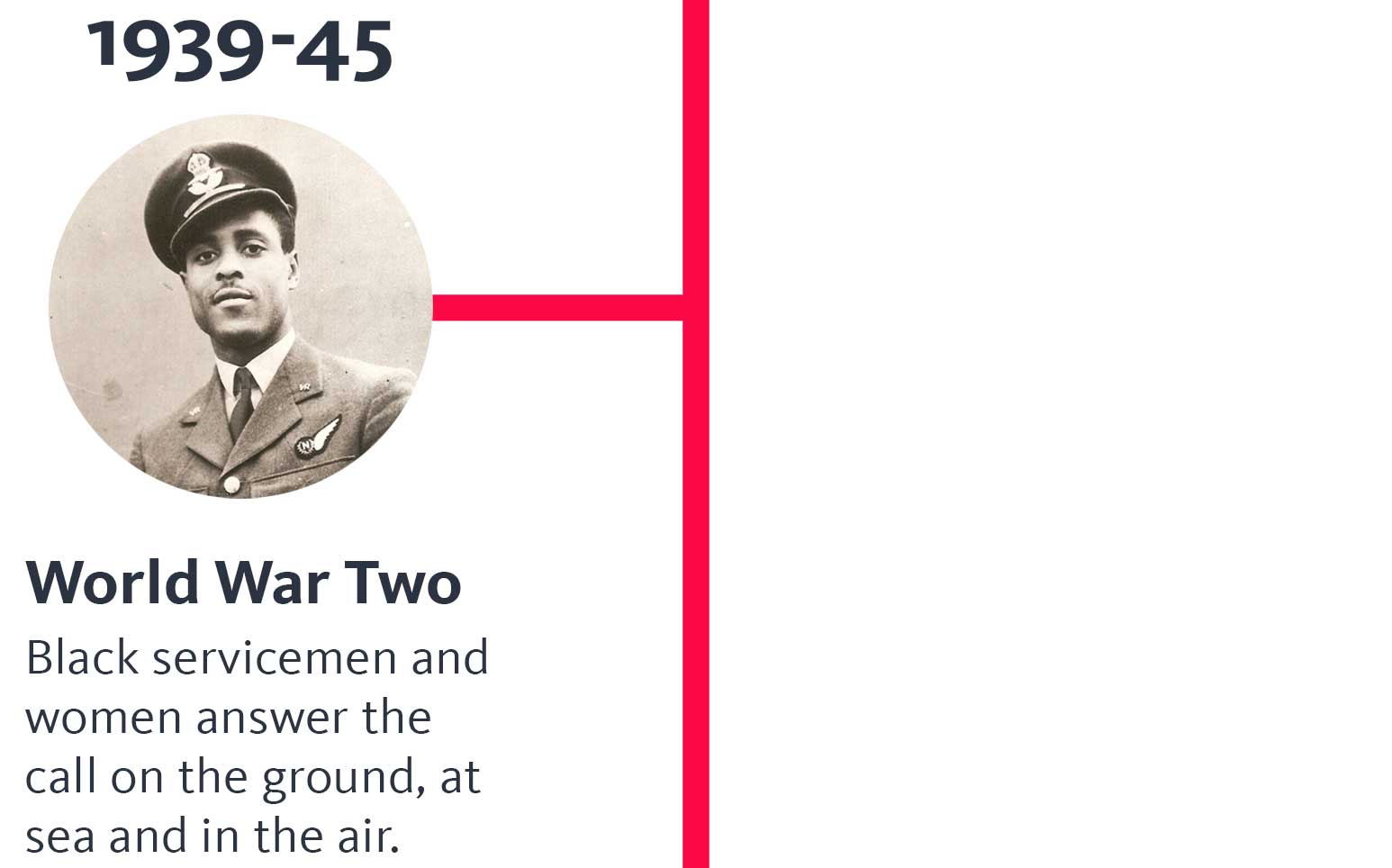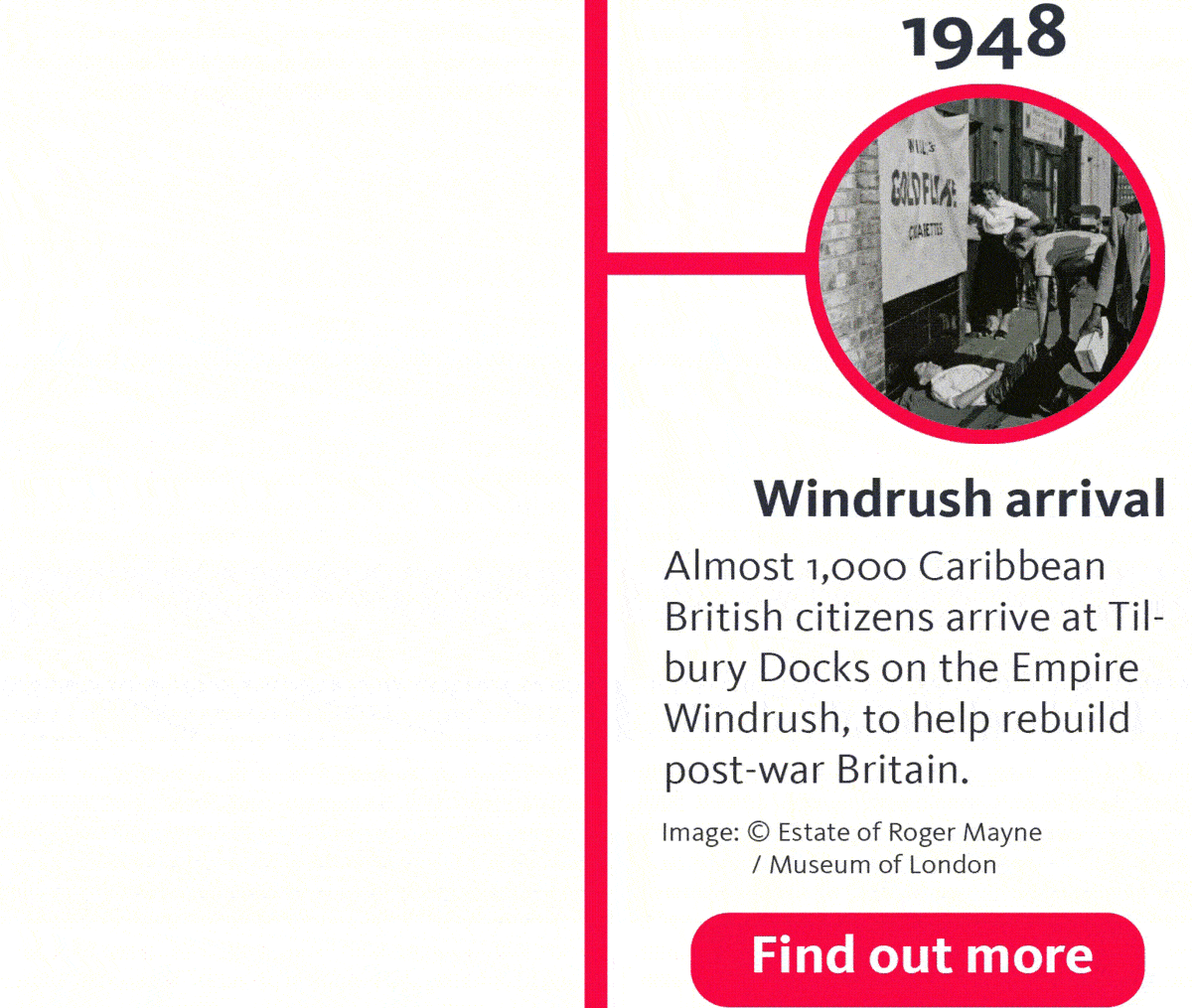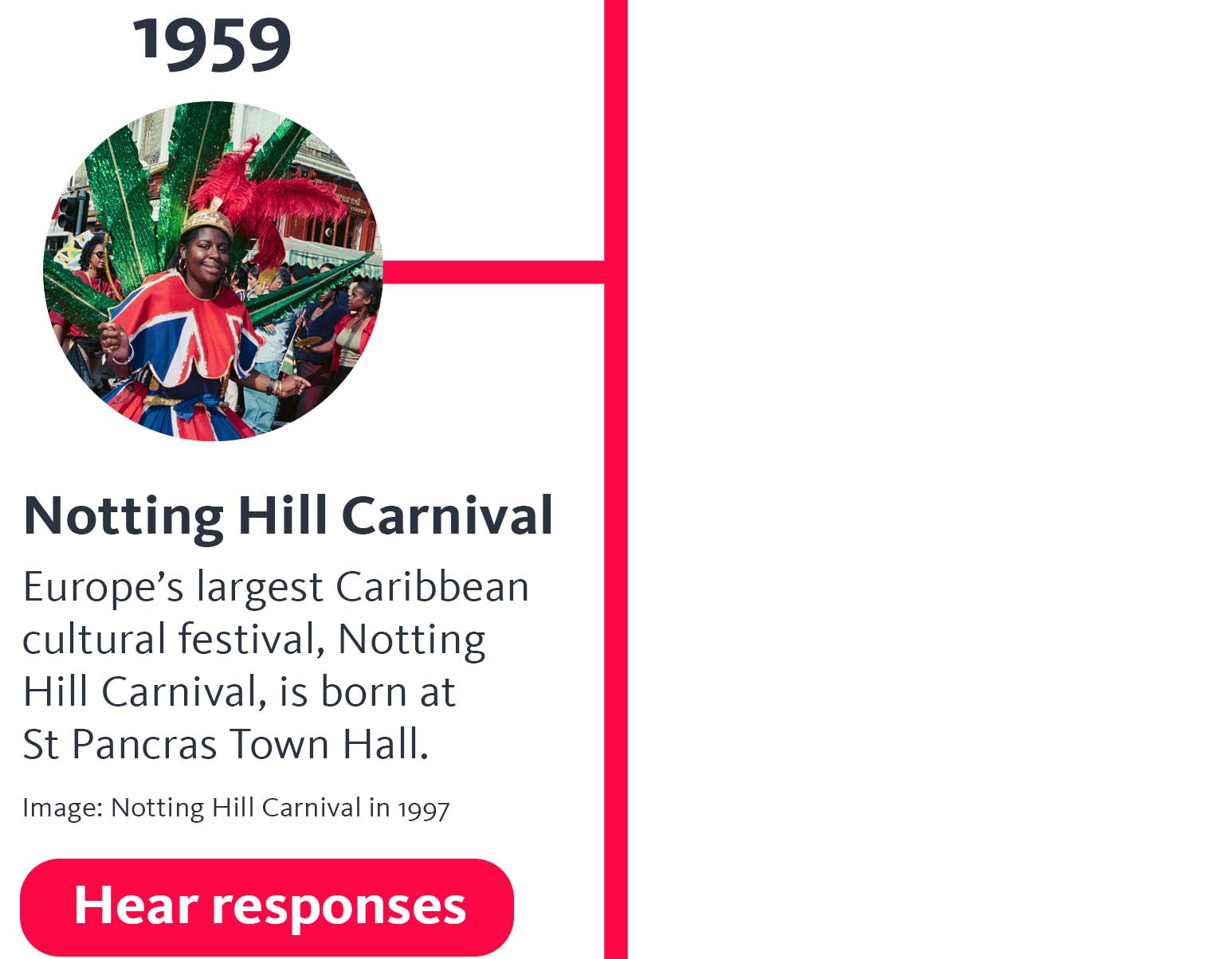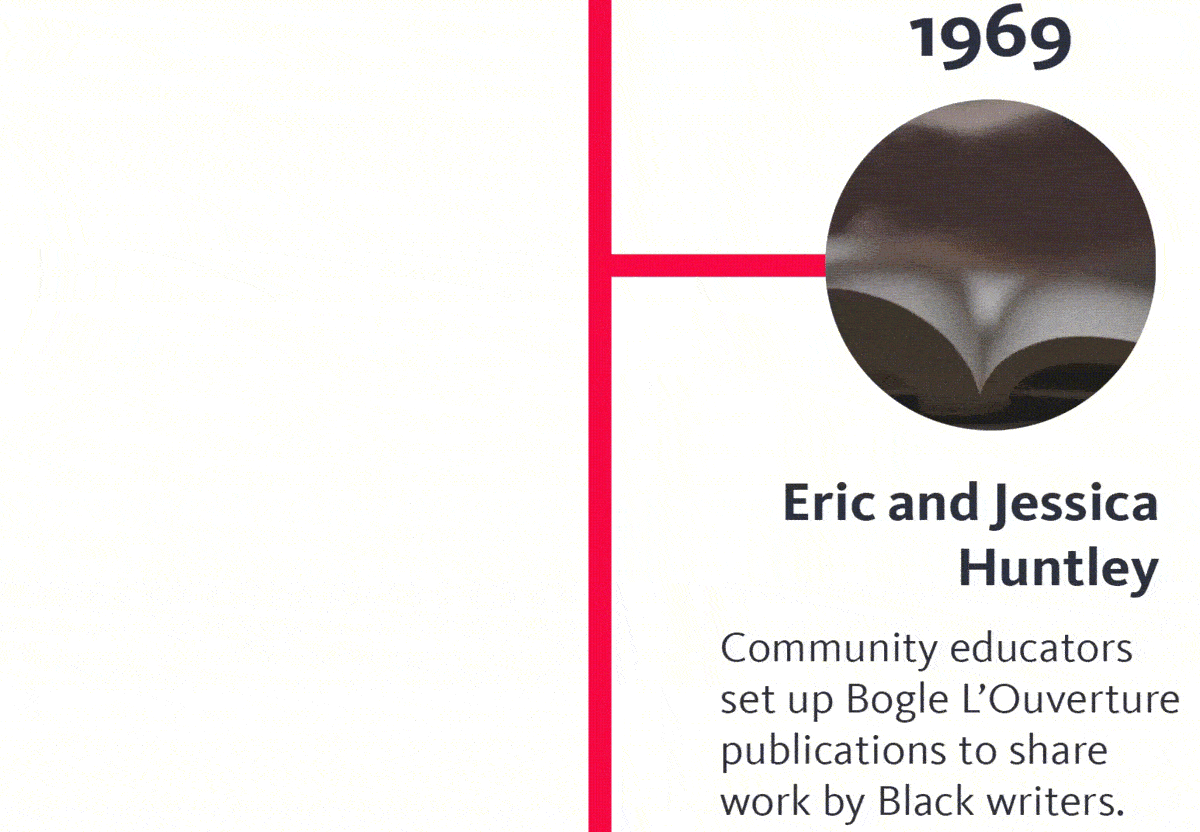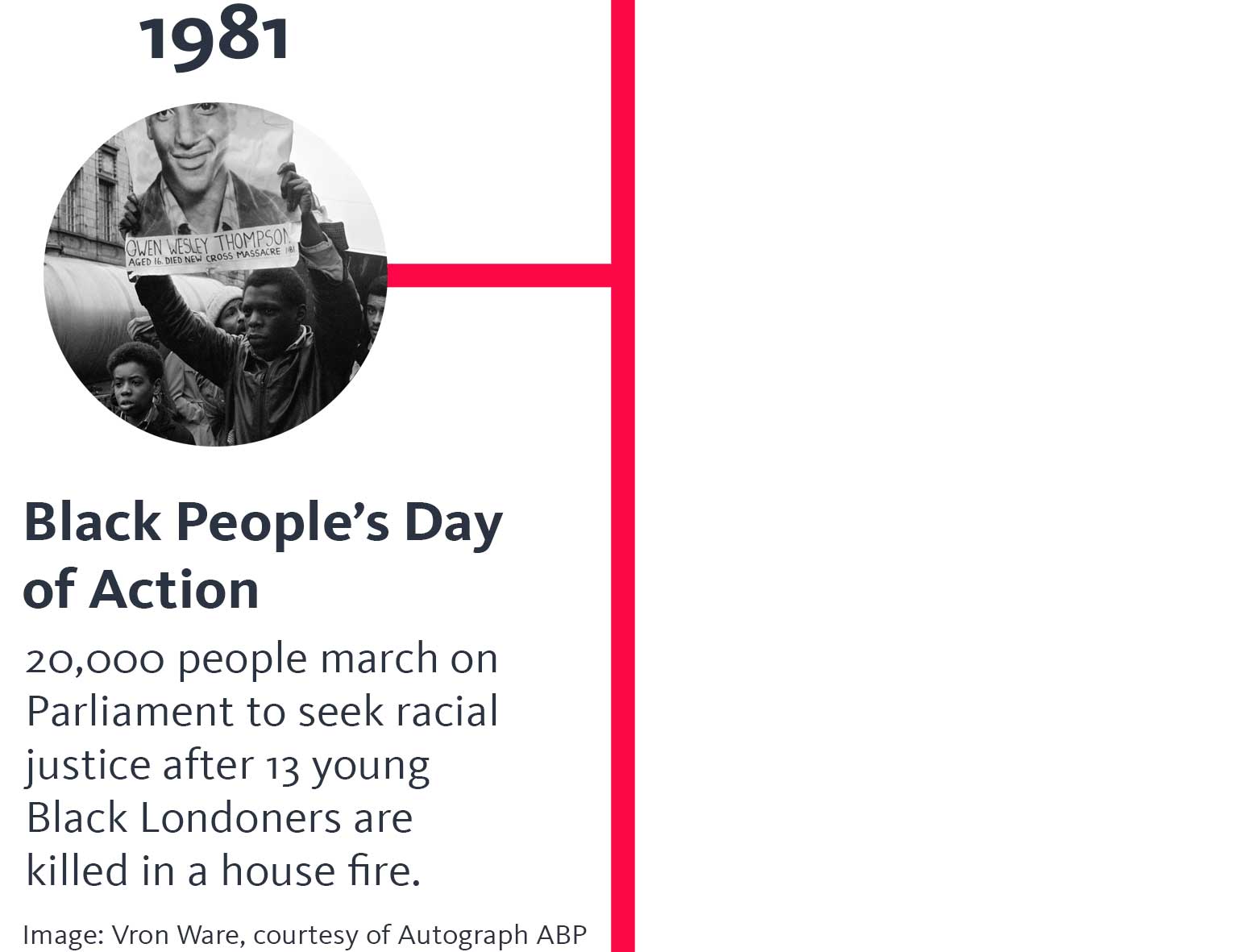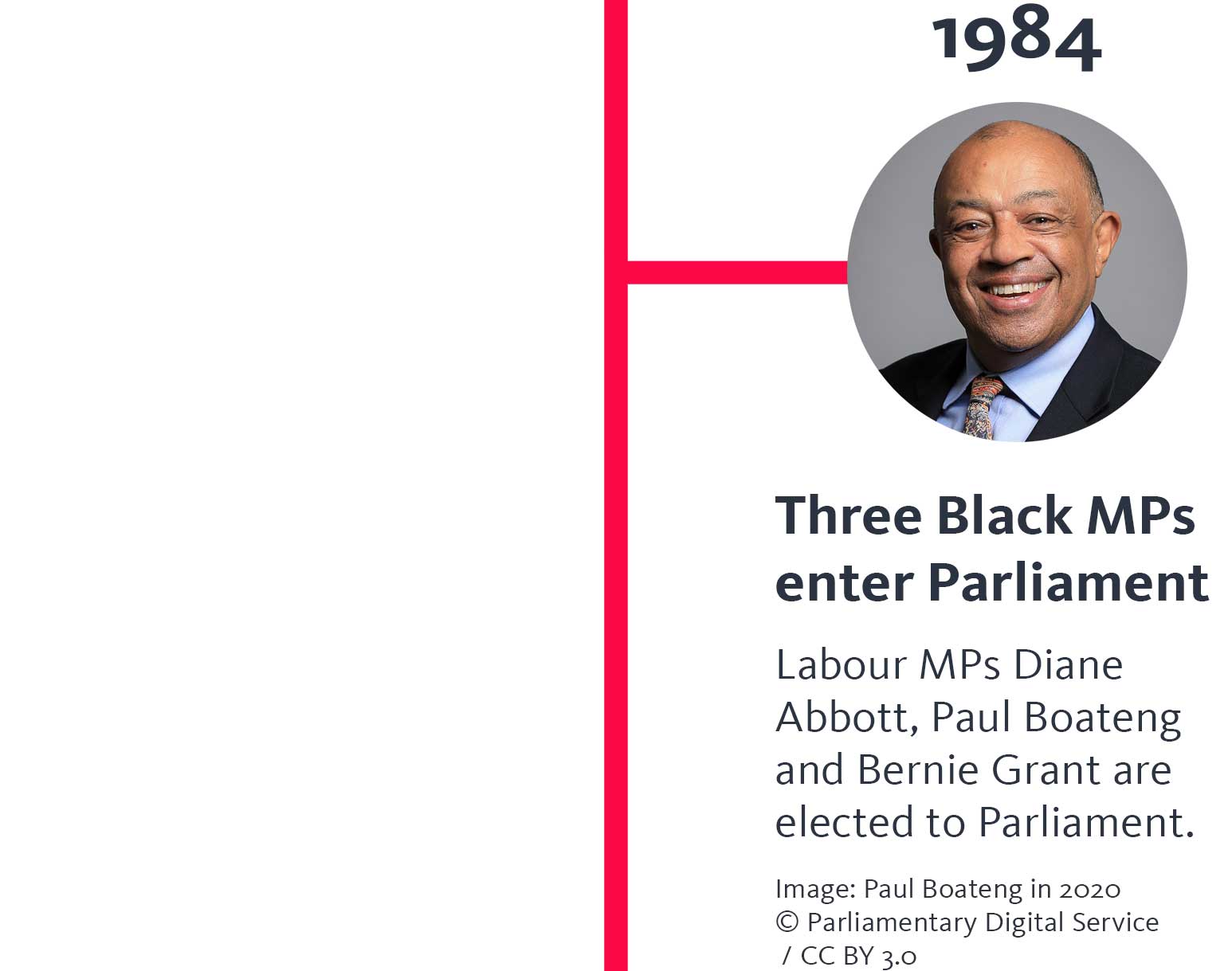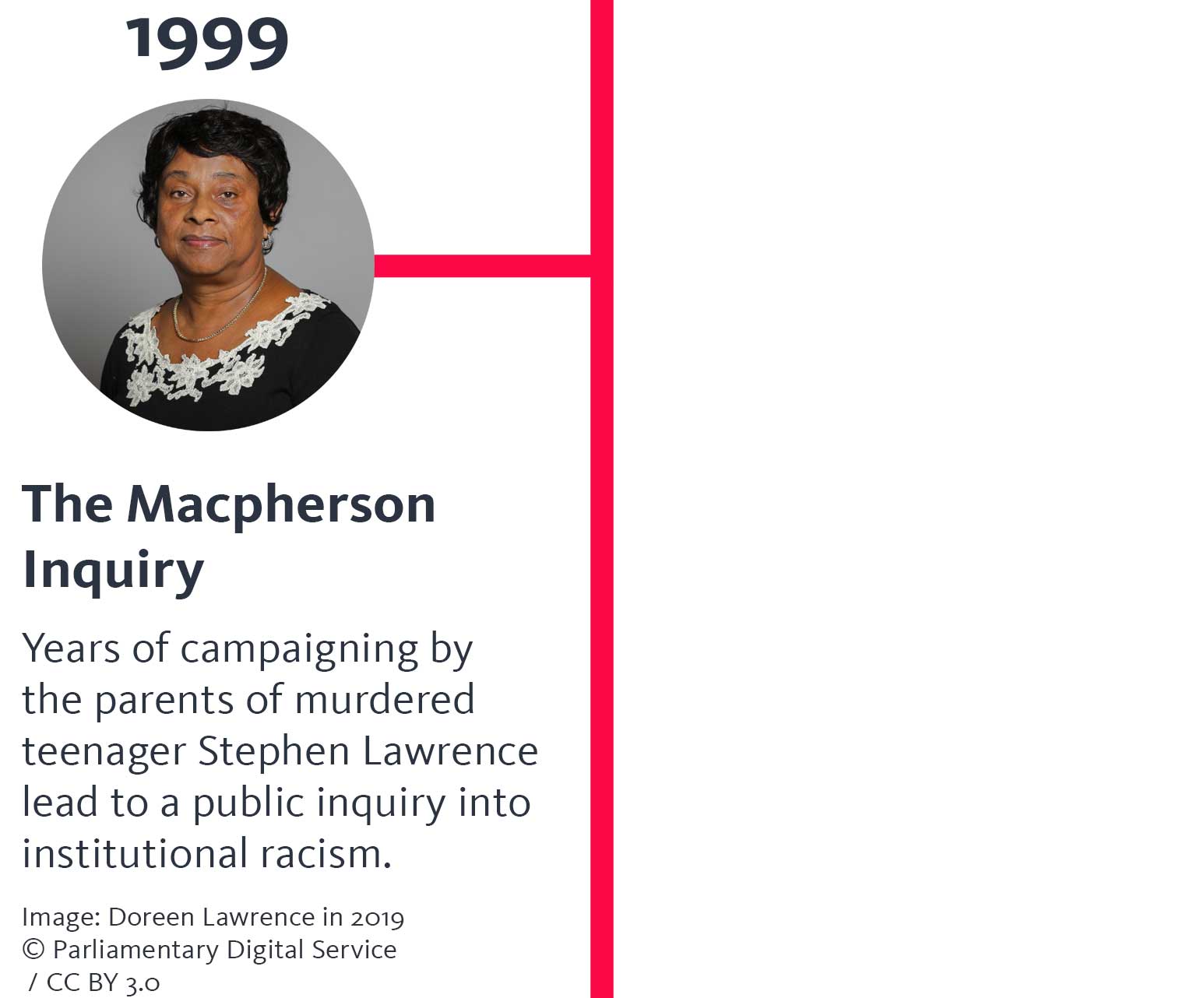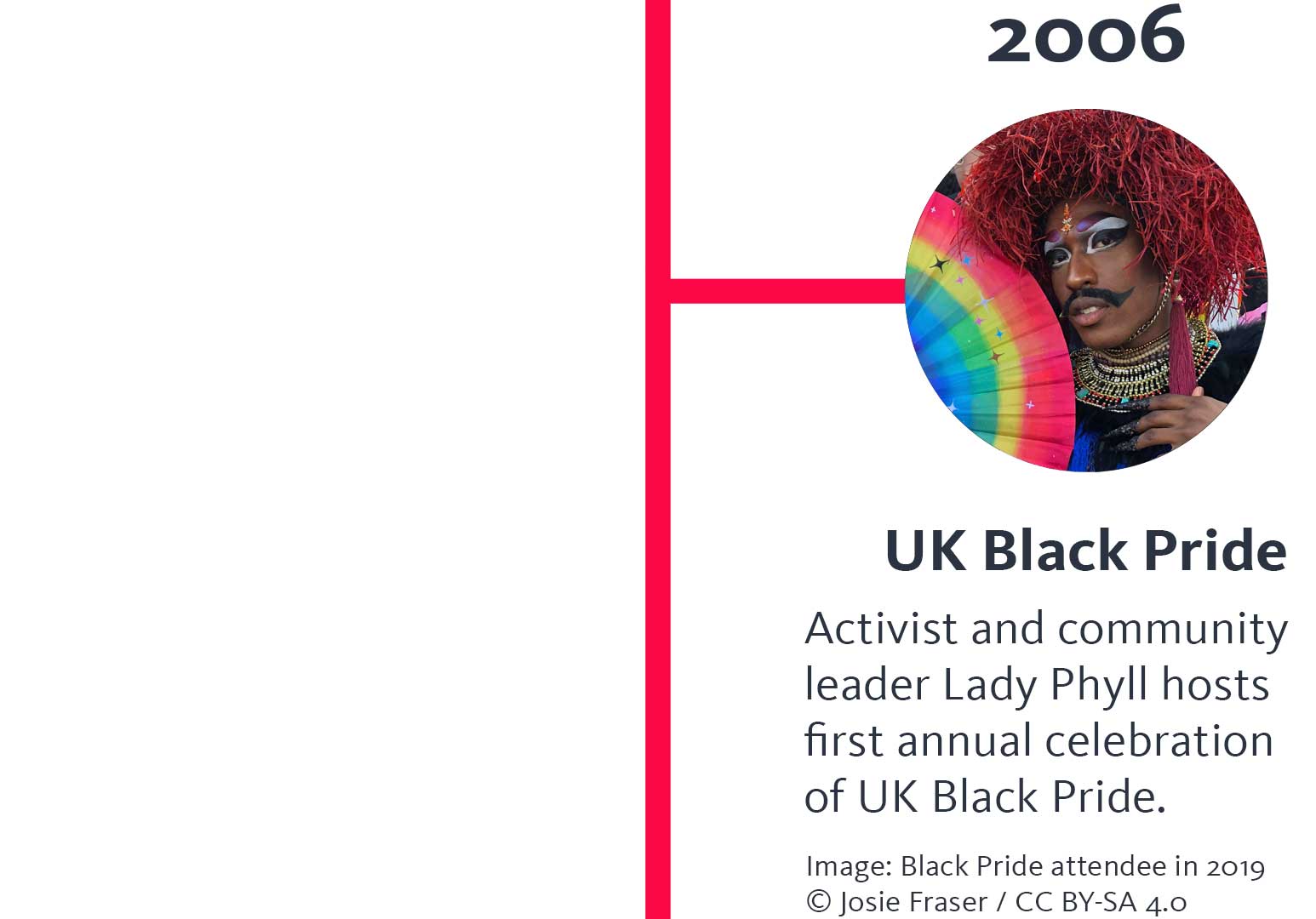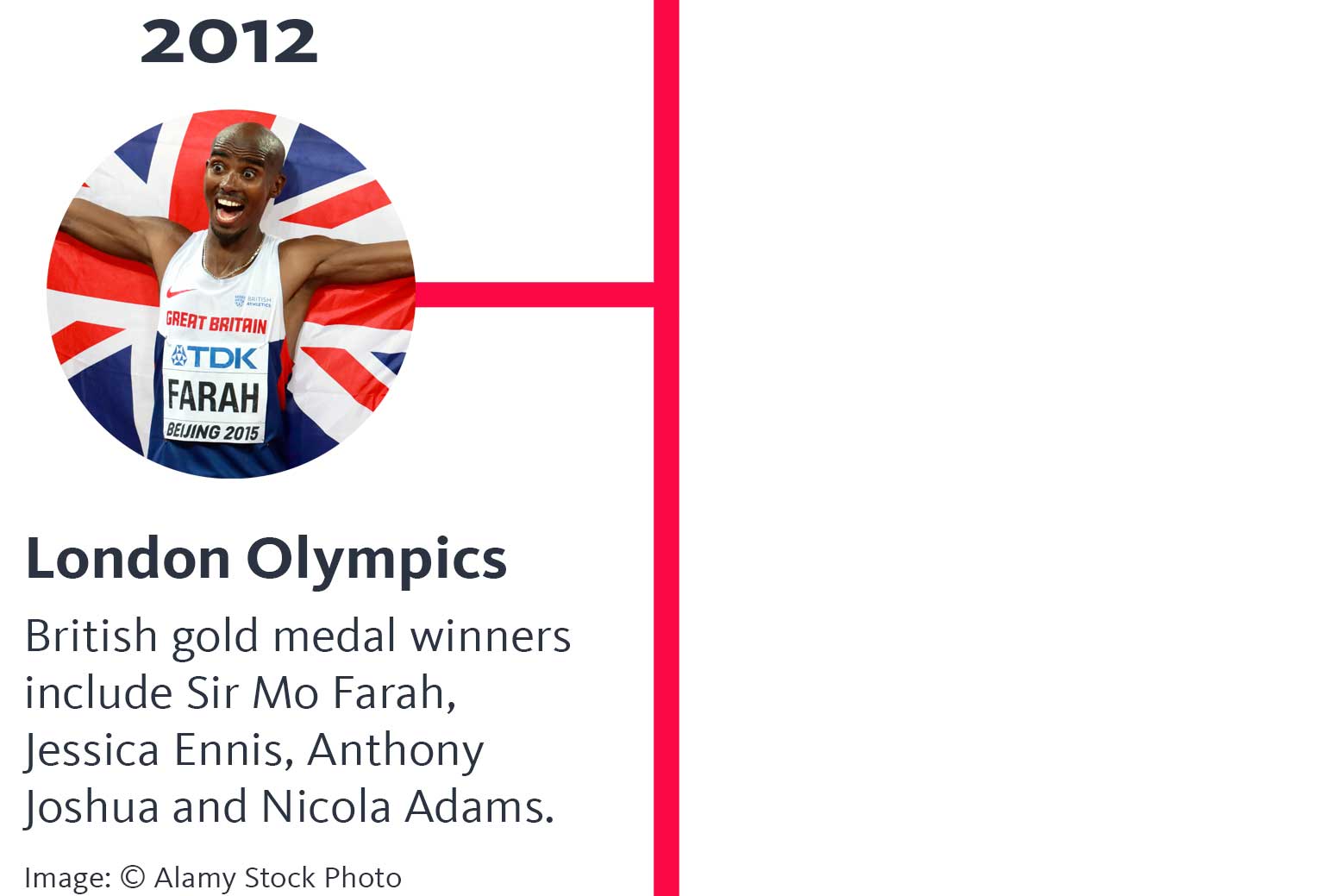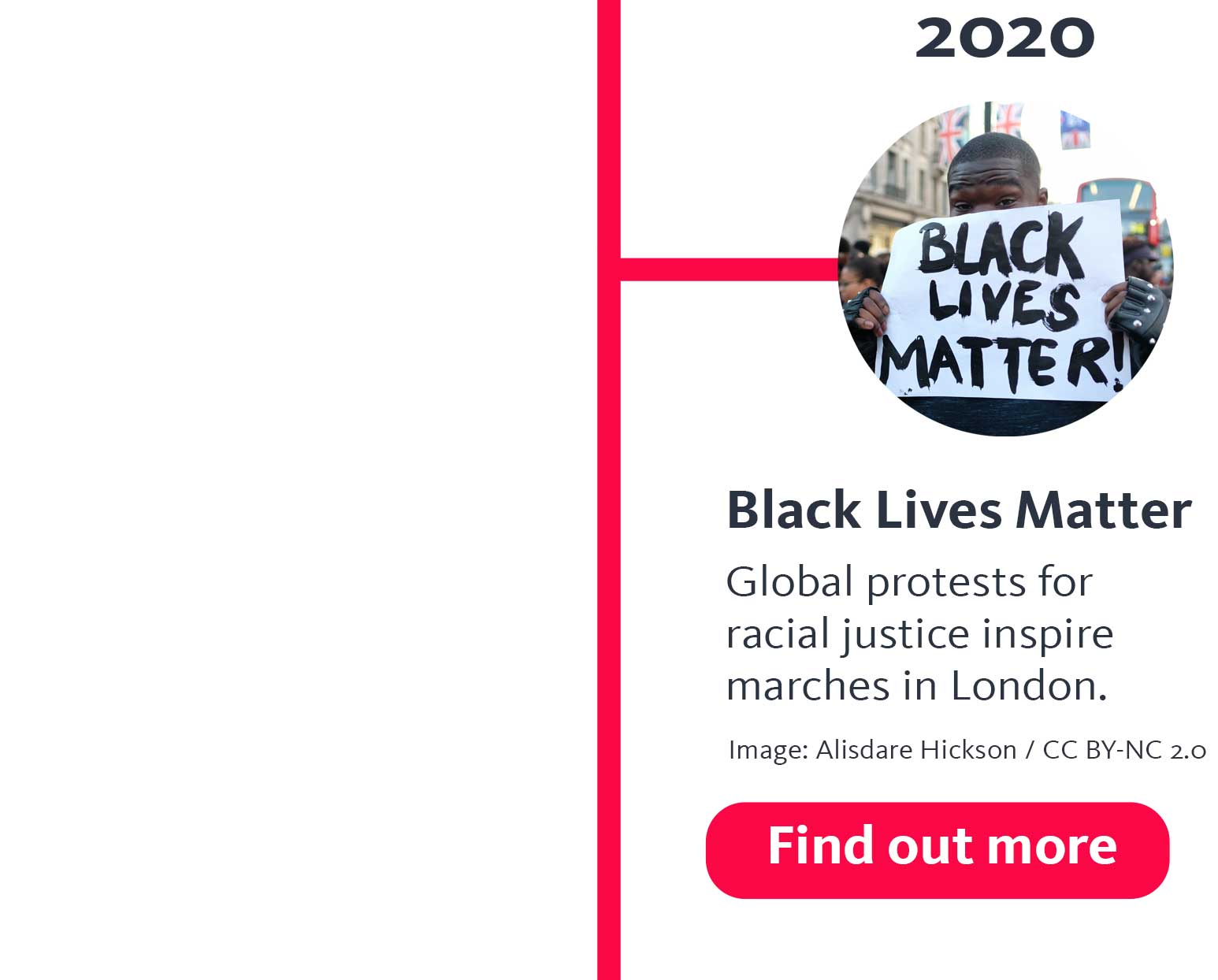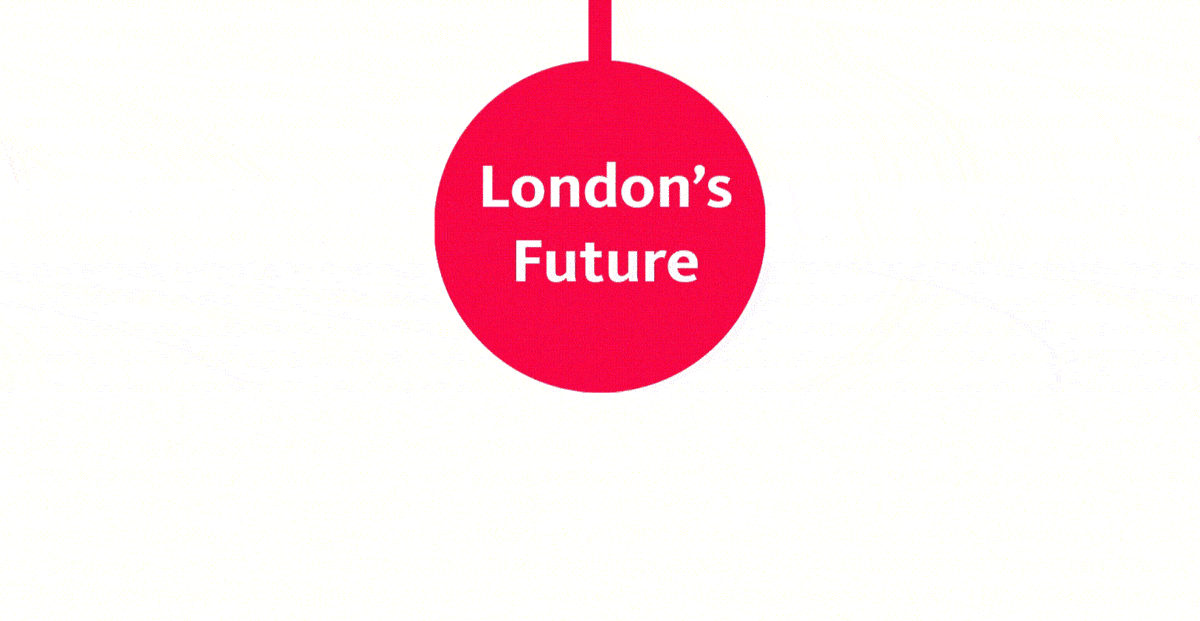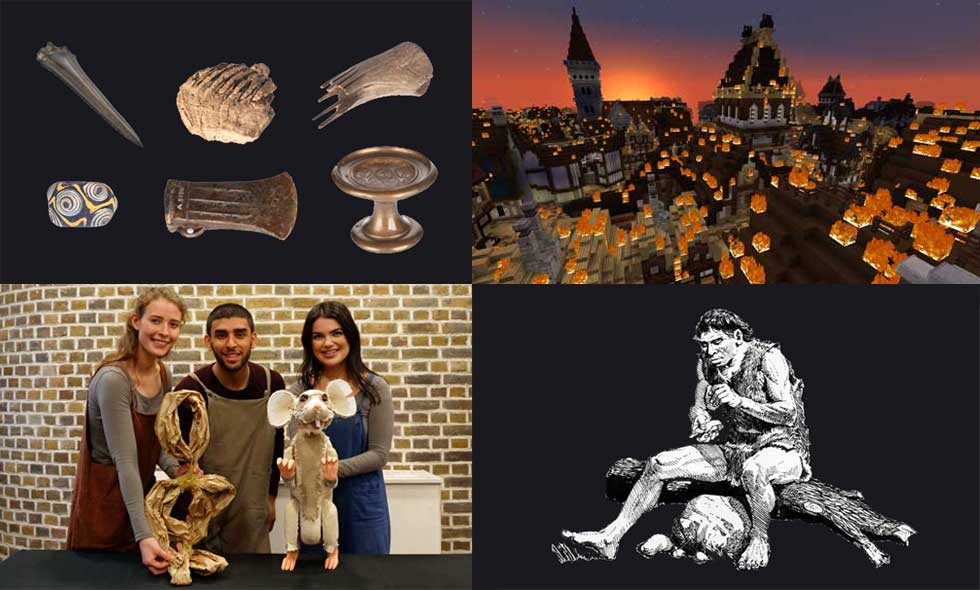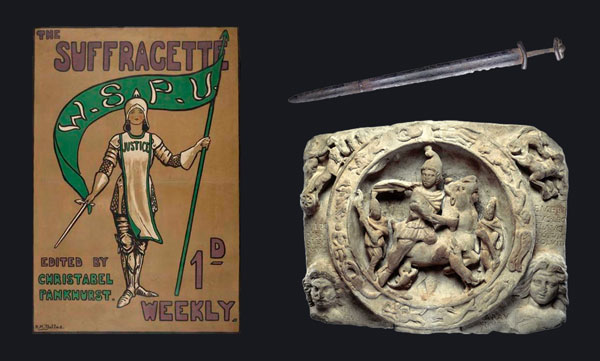Take a trip back in time to discover just some of London’s Black history from the Roman era to the present day. Learn about the amazing achievements of African and Caribbean Londoners and their contributions to London life.
Children? You’ll need an adult to join you. The stories told here are all true, and some of them may be upsetting. Adults? Click here for information on language used in the resource.
Scroll down and click on the buttons to dive deeper and find out more, or click here for a text-only version.
Words and terms in this resource
The words society uses to describe people and places are always changing. Names, terms and other words can have very different meanings and associations for different people.
Throughout history, some words and terms have been used to cause harm, degrade people and even take away a person’s humanity and dignity. An example of this is the word ‘slave’ when talking about people of African descent in telling the history of the transatlantic slave trade. Instead we choose to use the word 'enslaved' to make clear that this is an act that has been done to someone rather than an identity in itself.
While this is reflected in our displays, specifically in the ‘London, Sugar & Slavery’ gallery, it is not always reflected in our how our collections are documented because in some cases the information was written many years ago. We are working to change this.
In creating this resource, we have thought carefully about the words and terms used to describe the Black experience throughout London’s history.
If you would like further support on dealing with language and terminology in the context of enslavement and empire, important guidance for children and young people can be found here at the Understanding Slavery Initiative website.
We hope you enjoy sharing and using the Black Londoners through time resource.









